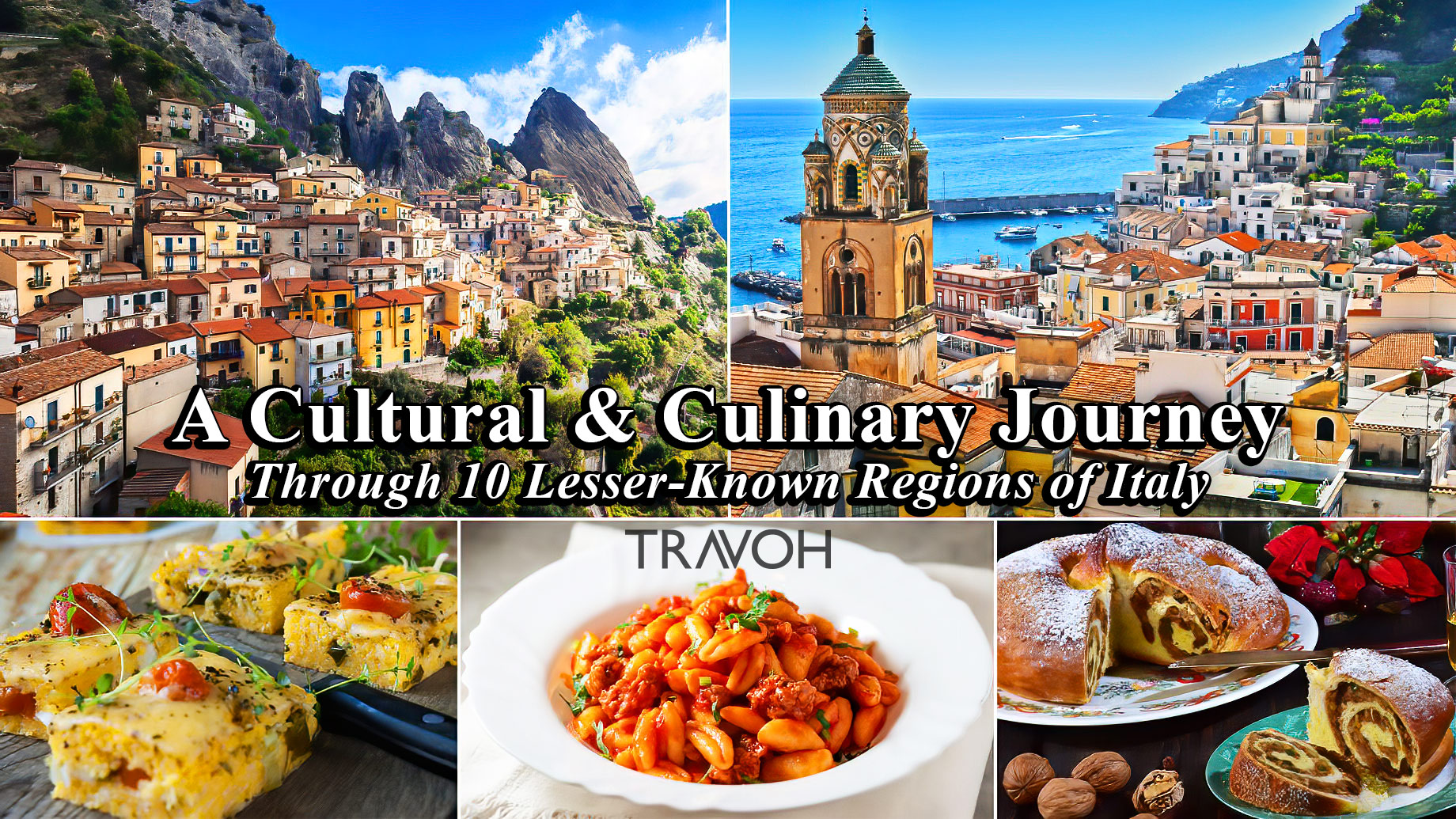
Unearthing Italy’s Secrets
When it comes to Italy, popular destinations like Rome, Venice, and Florence often steal the spotlight. However, this enchanting country has so much more to offer. We will guide you on a cultural and culinary journey through some of Italy’s lesser-known regions, where you’ll discover hidden gems that are sure to captivate your heart and taste buds.
1. Emilia-Romagna – The Gastronomic Capital
Our first stop is the northern region of Emilia-Romagna, known for its rich culinary history and vibrant food scene. Home to the cities of Bologna, Parma, and Modena, this region boasts iconic dishes like tortellini, lasagna, and of course, the world-famous Parmigiano-Reggiano cheese and balsamic vinegar. Be sure to visit a local market or sign up for a cooking class to learn how to make these delectable dishes yourself.
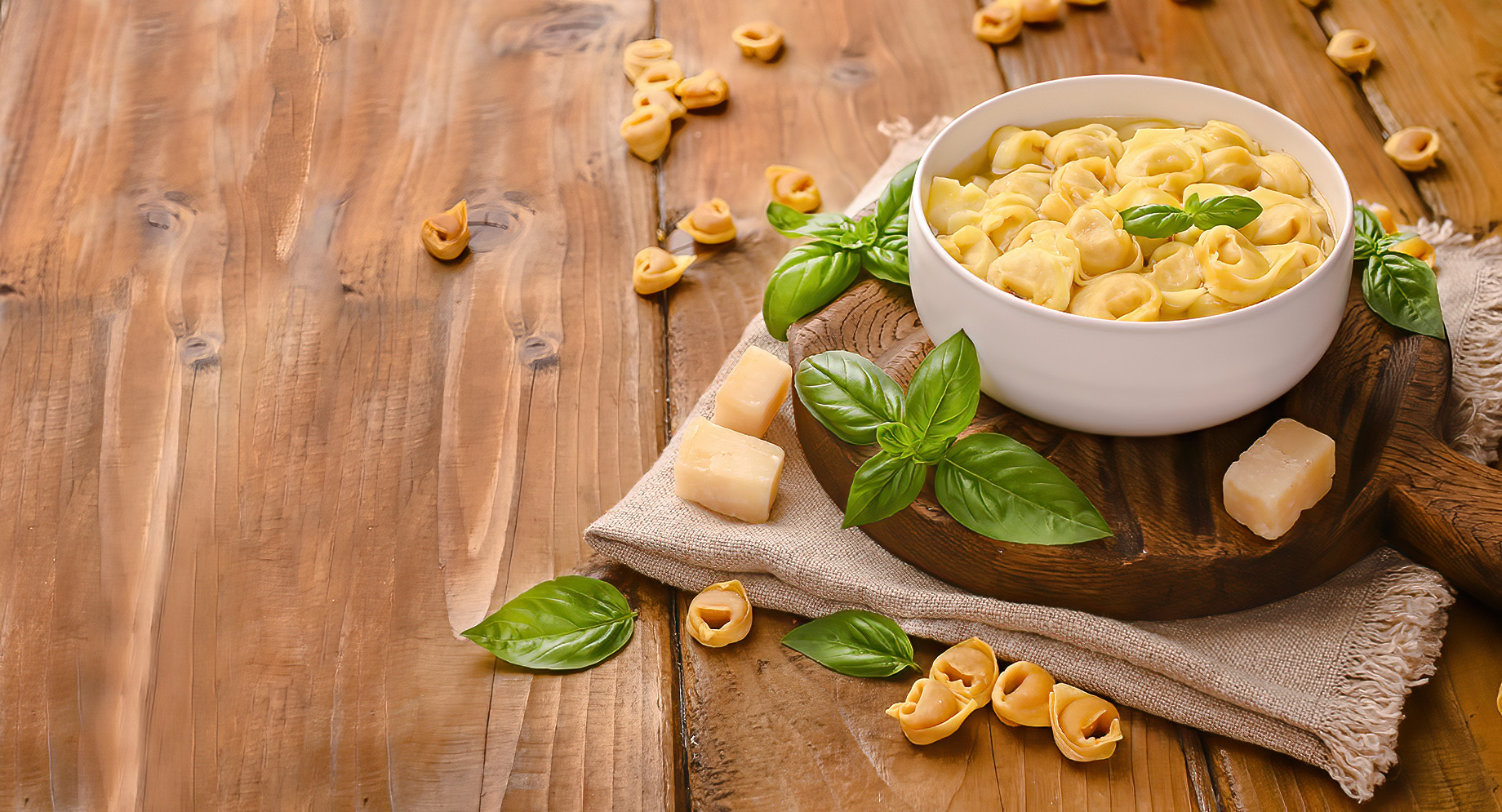
In addition to its delectable cuisine, Emilia-Romagna is renowned for its rich cultural heritage and architectural marvels. Wander through the vibrant streets of Bologna, the region’s capital, and admire its iconic red-brick buildings and the famous Due Torri (Two Towers). Visit the city of Parma, home to the stunning Romanesque-style Parma Cathedral and the Baptistery of Parma, considered one of Italy’s most important medieval monuments. For car enthusiasts, a visit to Modena is a must, as it’s home to the Ferrari Museum and the Enzo Ferrari Birthplace Museum, dedicated to the life and work of the legendary carmaker. Emilia-Romagna’s blend of gastronomic delights and captivating culture makes it a must-visit destination for any traveller.
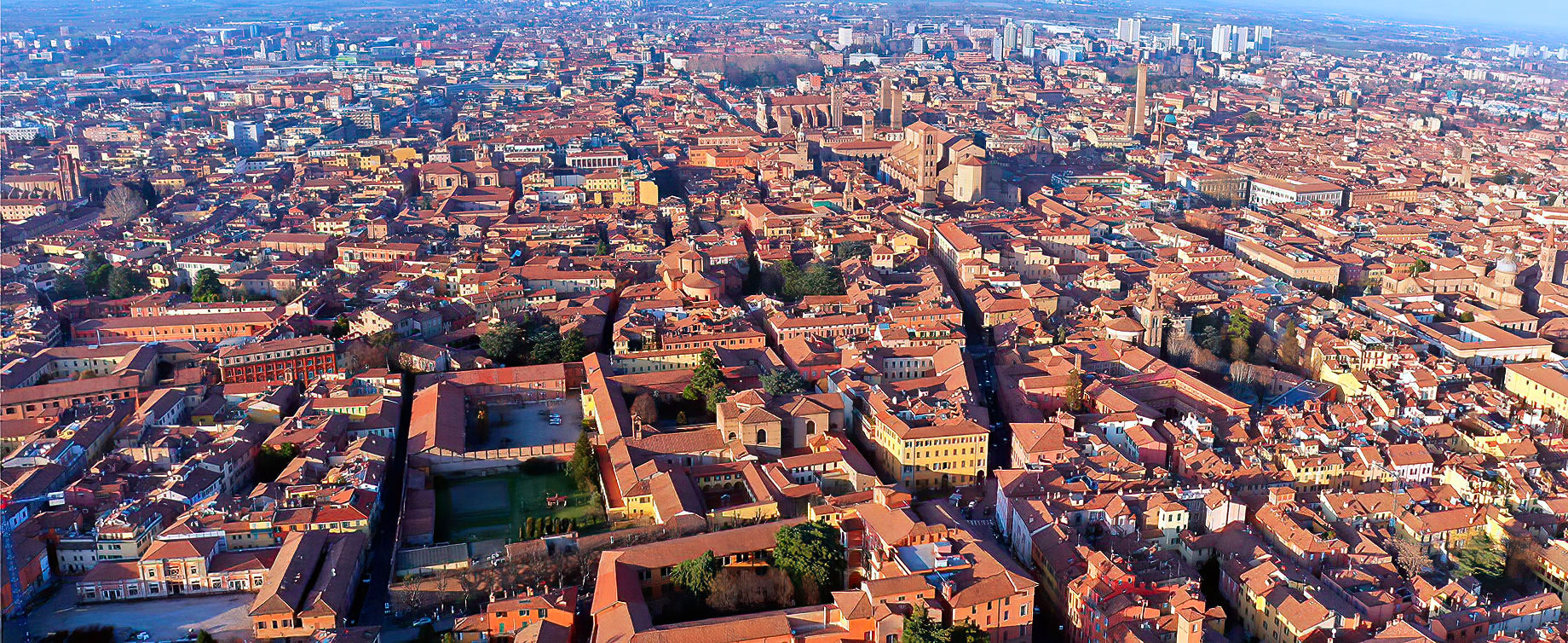
2. Le Marche – A Land of Rolling Hills and Charming Villages
Nestled between the Apennines and the Adriatic Sea, Le Marche is an alluring region with stunning landscapes and picturesque villages. Explore the Renaissance town of Urbino, the birthplace of the renowned painter Raphael, and stroll through the cobblestone streets of Ascoli Piceno, where you can savour the region’s signature dish, olive all’ascolana (stuffed olives).
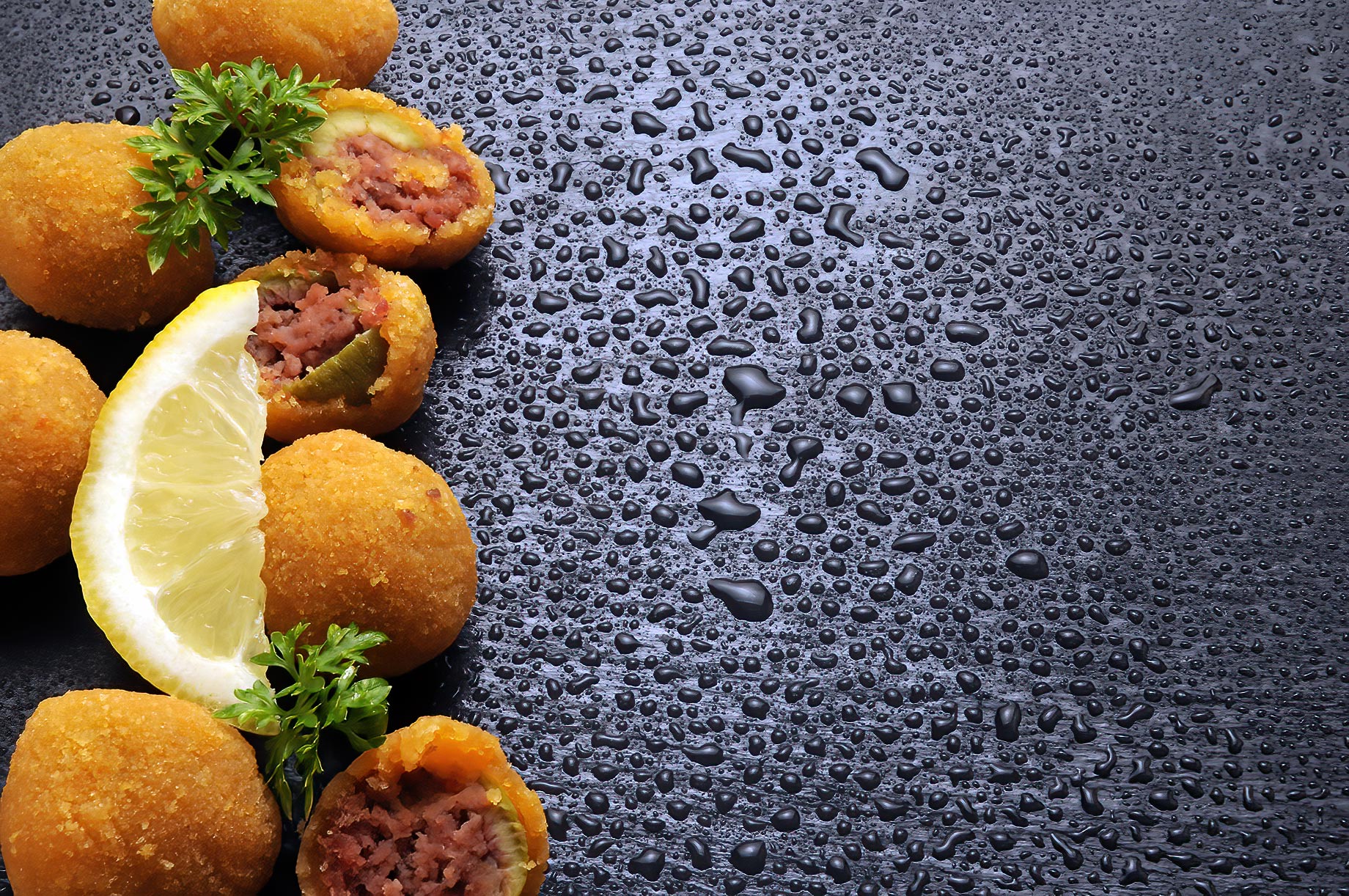
Olive all’ascolana, a signature dish of the Le Marche region, showcases the area’s culinary prowess and passion for high-quality local ingredients. Originating from the town of Ascoli Piceno, these delectable stuffed olives embody the region’s love for the flavorful and satisfying fare. To prepare this traditional appetizer, large, green Ascolana olives are pitted and filled with a mouthwatering mixture of seasoned ground meats, such as beef, pork, and sometimes chicken, combined with grated Parmigiano-Reggiano cheese, breadcrumbs, and aromatic herbs. The filled olives are then coated in a light egg and breadcrumb batter before being deep-fried to golden perfection, resulting in a crispy exterior that gives way to a warm, savoury filling. Best enjoyed with a glass of local wine, olive all’ascolana is a must-try delicacy that offers a true taste of Le Marche’s gastronomic heritage.
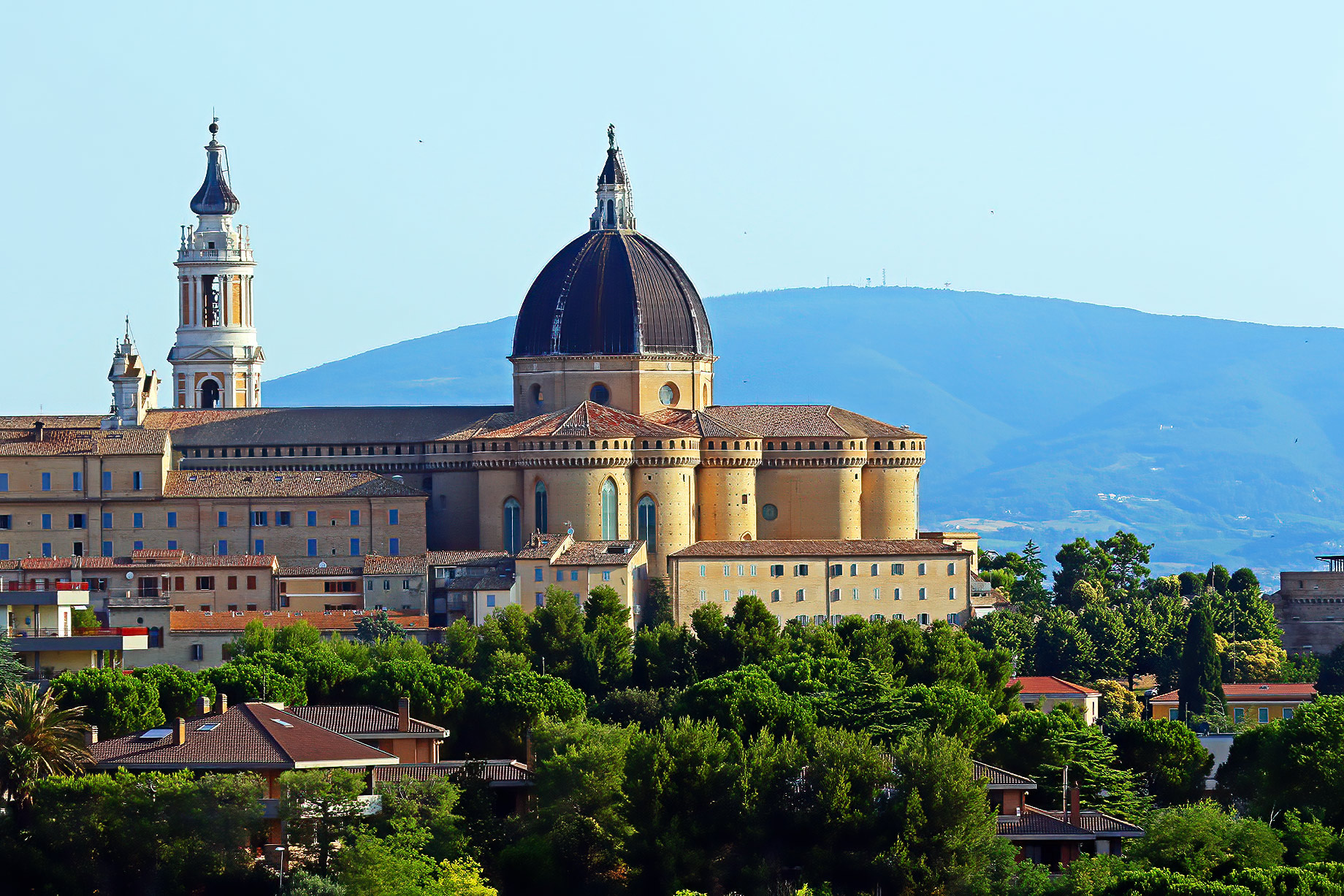
3. Basilicata – Italy’s Undiscovered Treasure
Basilicata, located in the southern part of Italy, offers a unique blend of history, nature, and culinary delights. Discover the ancient cave dwellings of Matera, a UNESCO World Heritage site, and experience the untouched beauty of the Pollino National Park. Don’t forget to sample the region’s rustic cuisine, such as the hearty lamb and potato stew called agnello alla pastora.
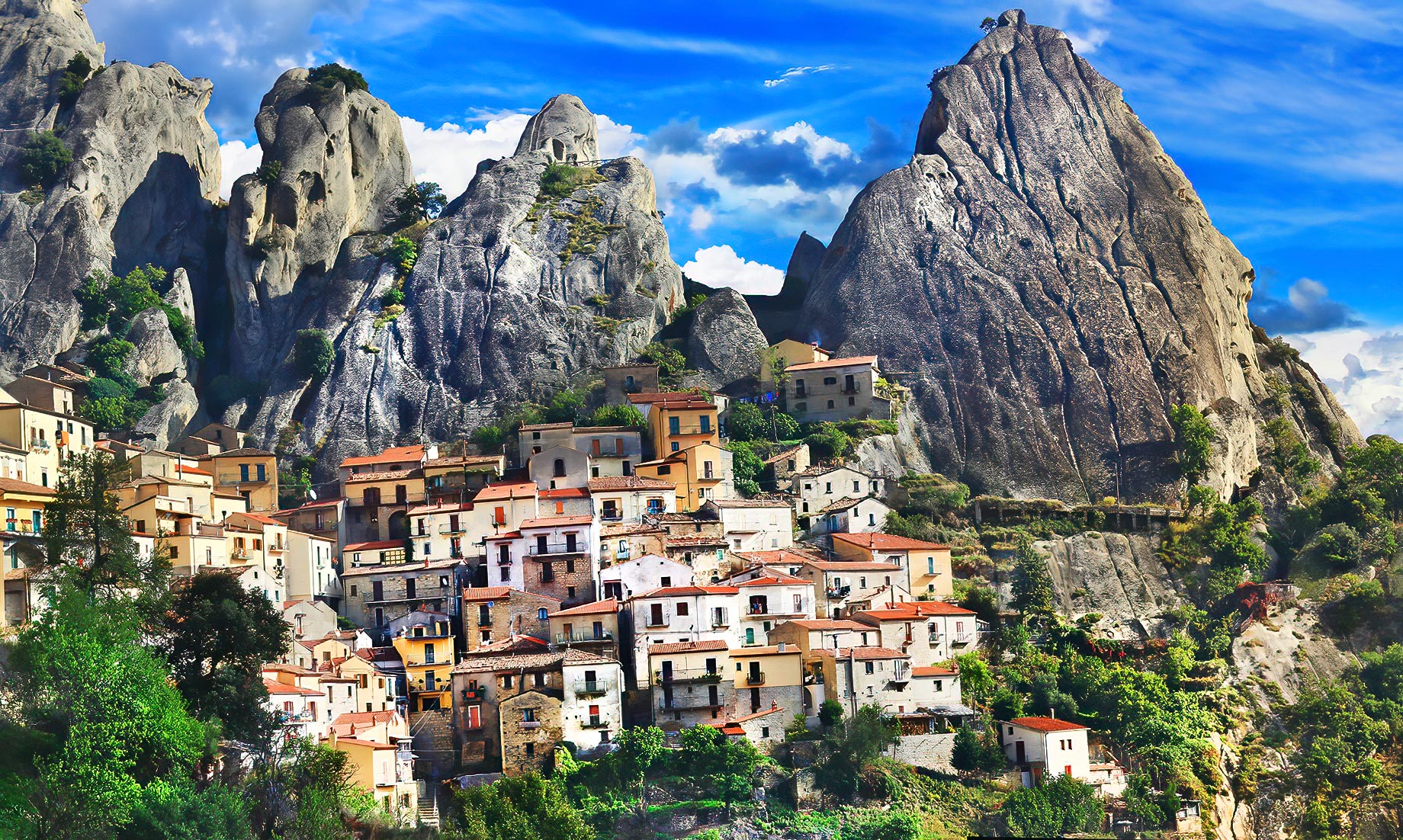
One of the most enchanting aspects of Basilicata is its rich history, which can be witnessed in the region’s countless archaeological sites and well-preserved historic centers. In the city of Potenza, the region’s capital, explore the ancient ruins of the Roman Villa of Malvaccaro and the remarkable frescoes at the Church of San Michele Arcangelo. The coastal town of Maratea, often referred to as the “Pearl of the Tyrrhenian,” boasts beautiful beaches, crystal-clear waters, and a charming historic center with narrow winding streets and picturesque squares.
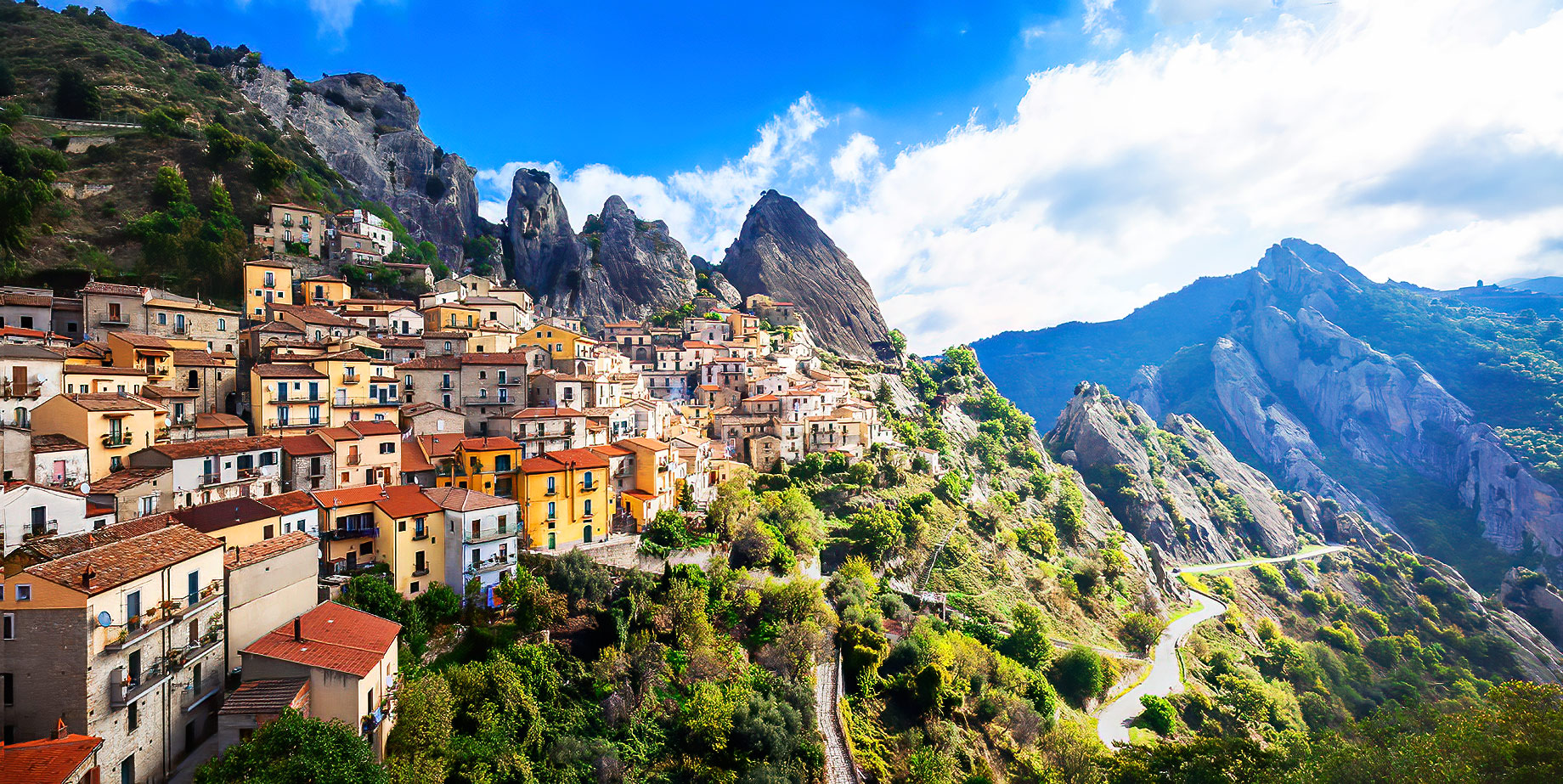
Basilicata’s Culinary Traditions – A Feast for the Senses
The cuisine of Basilicata is deeply rooted in the region’s agricultural heritage, with an emphasis on simple, high-quality ingredients that showcase the flavours of the land. Local staples include peppers, eggplants, tomatoes, and legumes, which are often combined with fresh pasta, such as the famous fusilli al ferretto, a hand-rolled pasta that pairs well with hearty meat sauces. Another quintessential Basilicata dish is pepperoni cruschi, sun-dried red peppers that are fried until crispy and used as a topping for pasta or served as a snack. The region’s culinary traditions provide a delightful gastronomic experience that complements its rich history and natural beauty.
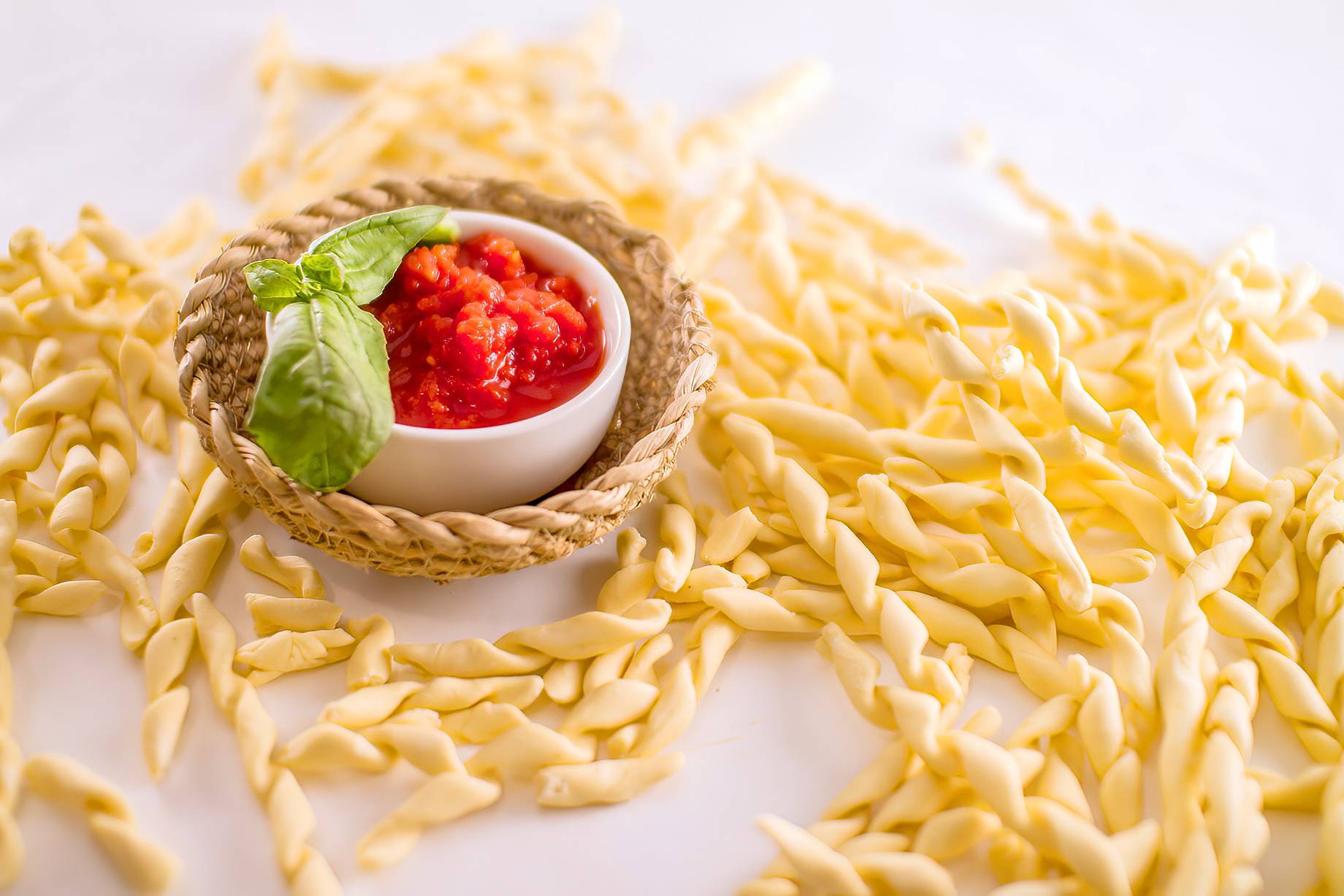
Matera’s European Capital of Culture Legacy
In 2019, Matera was designated as the European Capital of Culture, highlighting the city’s remarkable transformation from a once-impoverished area to a thriving cultural hub. This prestigious recognition has led to a resurgence of interest in the city and the region as a whole, with numerous events, festivals, and exhibitions celebrating Basilicata’s unique identity. Visitors to Matera can experience its vibrant arts scene, which includes contemporary art galleries, open-air theatres, and creative workshops that aim to preserve and promote the region’s cultural heritage. Exploring Basilicata today allows travellers to witness the dynamic interplay between the region’s ancient history and its blossoming contemporary identity.
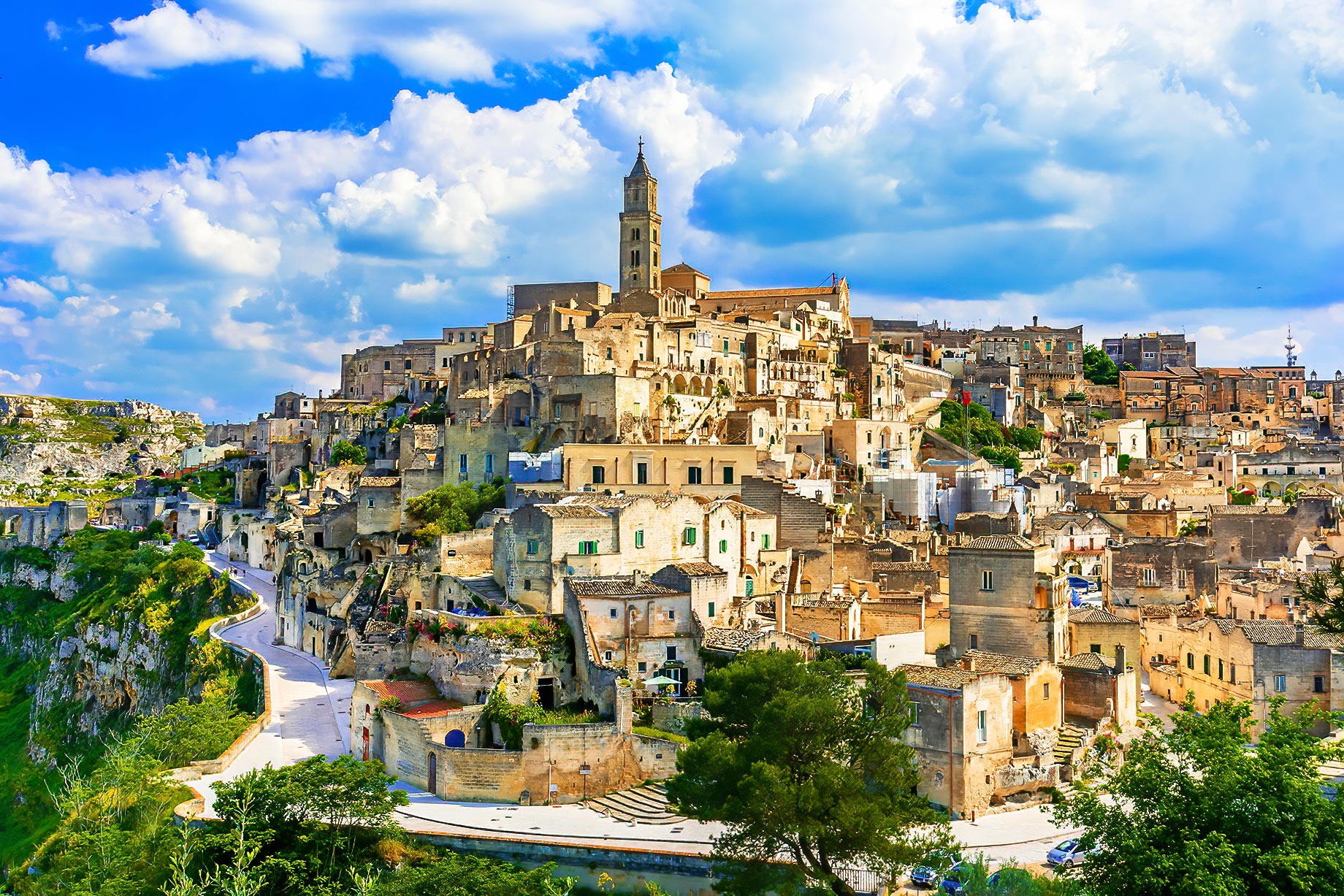
The city’s ancient Sassi district, characterized by its cave dwellings and labyrinthine streets, provides a stunning backdrop for a gastronomic adventure that combines age-old recipes with modern twists.
One of Matera’s most iconic dishes is “crapiata,” a hearty soup made from a blend of legumes, such as lentils, chickpeas, and fava beans, and grains like barley and wheat, which were historically grown in the region. This rustic dish, often enjoyed during the winter months, symbolizes the area’s connection to the land and its agricultural past.
Another local favourite is “orecchiette con le cime di rapa,” a pasta dish featuring ear-shaped pasta (orecchiette) tossed with turnip greens, garlic, and chilli pepper. The slightly bitter greens provide a pleasant contrast to the pasta’s chewy texture, creating a simple yet flavorful meal.
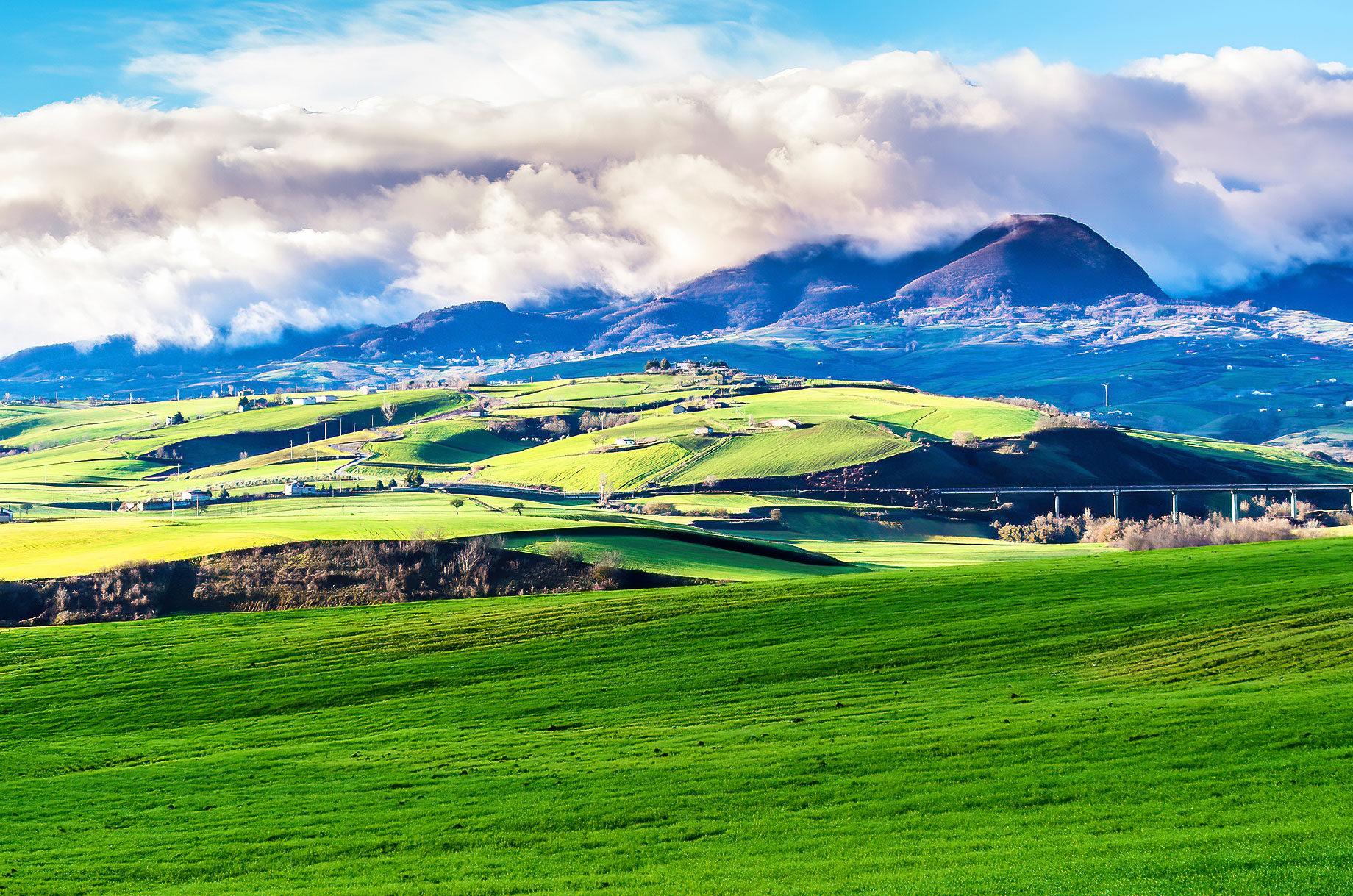
Bread is an integral part of Matera’s culinary tradition, with the local bread, “Pane di Matera,” recognized as a product of protected geographical indication (PGI). This large, round loaf is made from durum wheat flour and boasts a thick, crunchy crust with a soft, fragrant interior. It is often used as a base for bruschetta or served alongside various regional dishes.
In terms of sweets, “strazzata” is a popular Materan dessert that features a crumbly, buttery cookie made from flour, sugar, and almonds. Often flavoured with lemon zest or cinnamon, these cookies make a delightful accompaniment to a cup of coffee or tea.
Exploring Matera’s food scene offers a window into the region’s rich history and culinary traditions, providing travellers with an unforgettable experience of tastes and textures that are unique to this ancient city.
4. Molise – Tradition and Simplicity
Molise, Italy’s second-smallest region, is often overlooked by travellers, but it offers an authentic and unspoiled experience. Wander through the region’s fortified medieval villages like Pesche and Oratino, and immerse yourself in the vibrant local culture. The traditional cuisine of Molise features simple ingredients with bold flavours, such as cavatelli pasta with a robust tomato sauce.
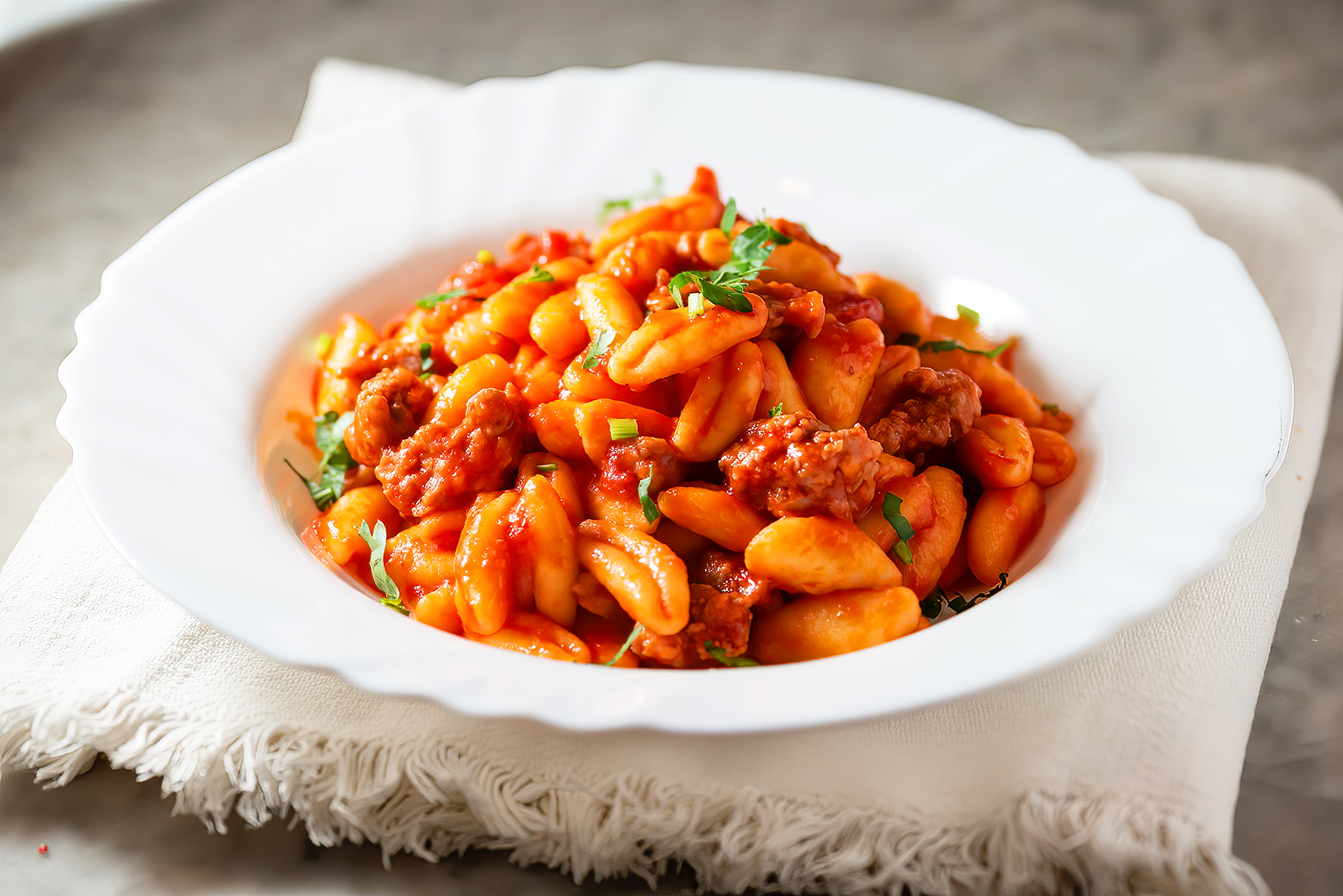
Cavatelli, a traditional pasta hailing from the Molise region, is a testament to the simplicity and authenticity of Southern Italian cuisine. Handmade from a dough of semolina flour and water, these small, ridged pasta shapes resemble miniature hot dog buns or hollowed-out seashells. The beauty of cavatelli lies in its versatility, as it pairs well with a variety of sauces and ingredients. One of the most beloved preparations in Molise is cavatelli con sugo di cinghiale, which features the pasta tossed in a rich, slow-cooked wild boar sauce. Another popular dish is cavatelli with broccoli and garlic, where the pasta is combined with sautéed broccoli, garlic, and chilli flakes for a delightful balance of flavours. No visit to Molise would be complete without savouring a plate of cavatelli pasta, a true culinary gem that showcases the region’s rich gastronomic heritage.
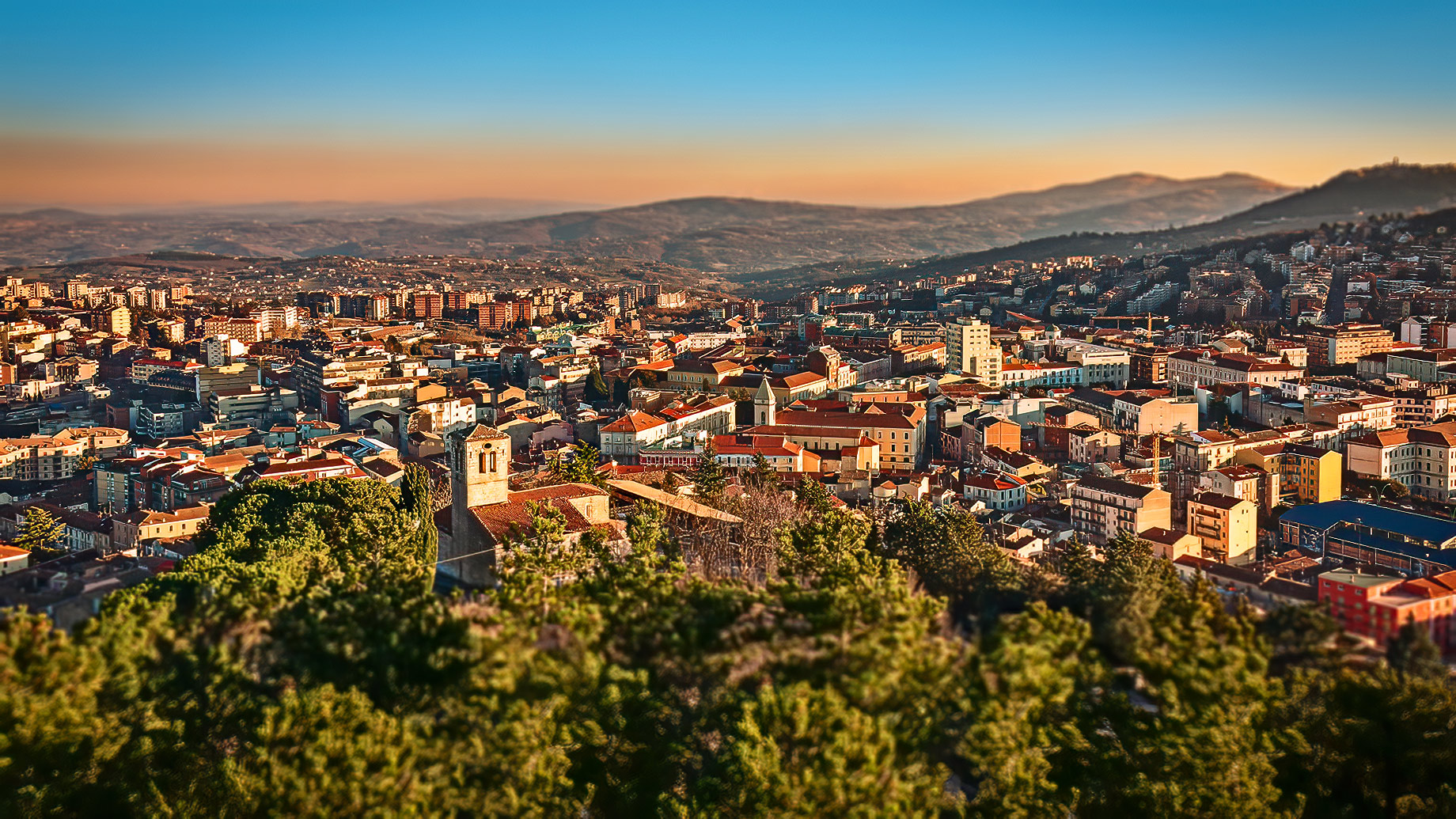
In addition to its medieval villages and robust cuisine, Molise boasts a rich cultural heritage, with numerous festivals and events throughout the year. One such event is the Processione delle Vergini, held in Campobasso, where young girls dressed in white carry candles and flowers through the streets. Another highlight is the Carrese di San Martino, a traditional ox-drawn cart race held in Ururi. While in Molise, don’t miss the opportunity to visit the ancient ruins of Saepinum, a well-preserved Roman town that provides a fascinating glimpse into Italy’s storied past. These authentic experiences will make your visit to Molise truly unforgettable.
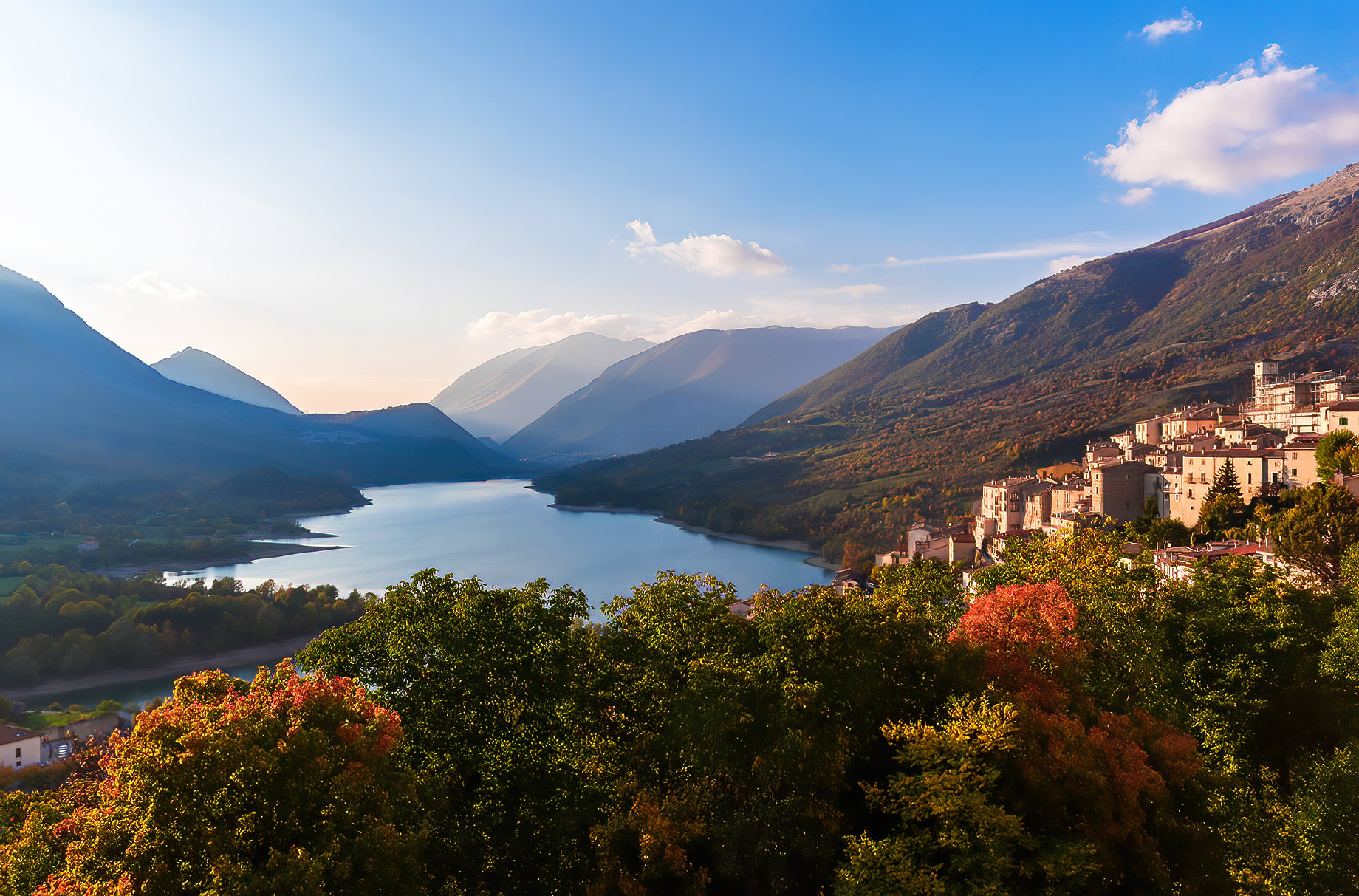
5. Valle d’Aosta – Alpine Beauty and Savory Delights
Nestled in the northwestern corner of Italy, bordering France and Switzerland, Valle d’Aosta boasts breathtaking alpine landscapes and unique cultural heritage. Explore the region’s dramatic castles, like the Castle of Fénis, and enjoy the local cuisine, which reflects both Italian and French influences. Be sure to try the fonduta valdostana, a delicious cheese fondue featuring the region’s Fontina cheese.
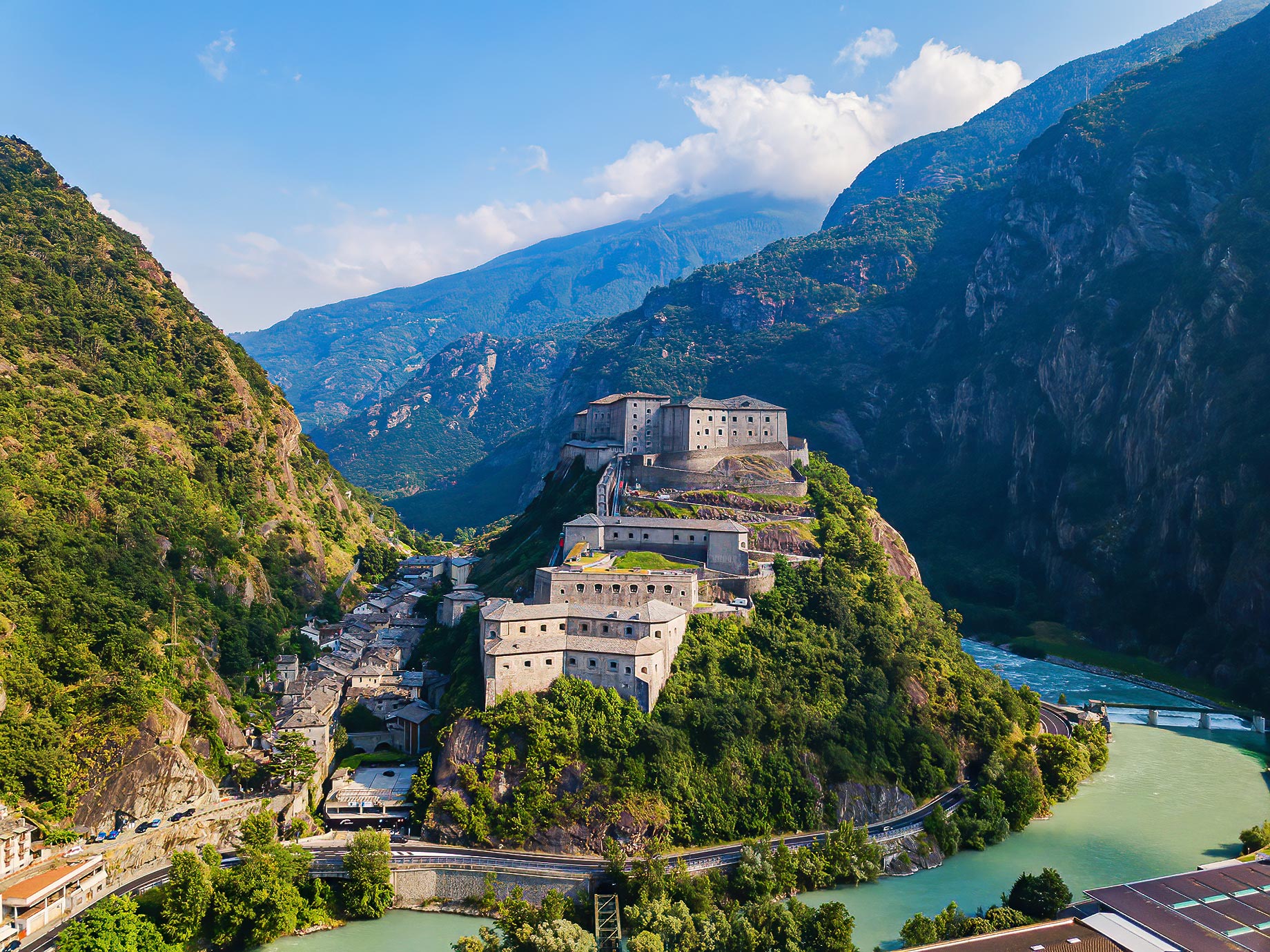
Fontina Cheese – Aosta Valley’s Creamy Delight
Fontina cheese, originating from the picturesque Aosta Valley in Italy, is a true culinary treasure that reflects the region’s alpine heritage. Made from the raw milk of Valdostana cows that graze on the lush mountain pastures, Fontina is a semi-soft cheese with a smooth, creamy texture and a nutty, slightly earthy flavour. Its natural, pale-yellow rind encases a supple interior dotted with small holes. Fontina is a versatile cheese that can be enjoyed on its own, melted into a rich fondue, or used as a flavorful addition to a variety of dishes, such as the region’s traditional polenta conchia, where the cheese is melted over warm polenta. The PDO (Protected Designation of Origin) status ensures that only cheese produced in the Aosta Valley according to traditional methods can be labelled as Fontina, preserving the authenticity and quality of this cherished regional specialty.
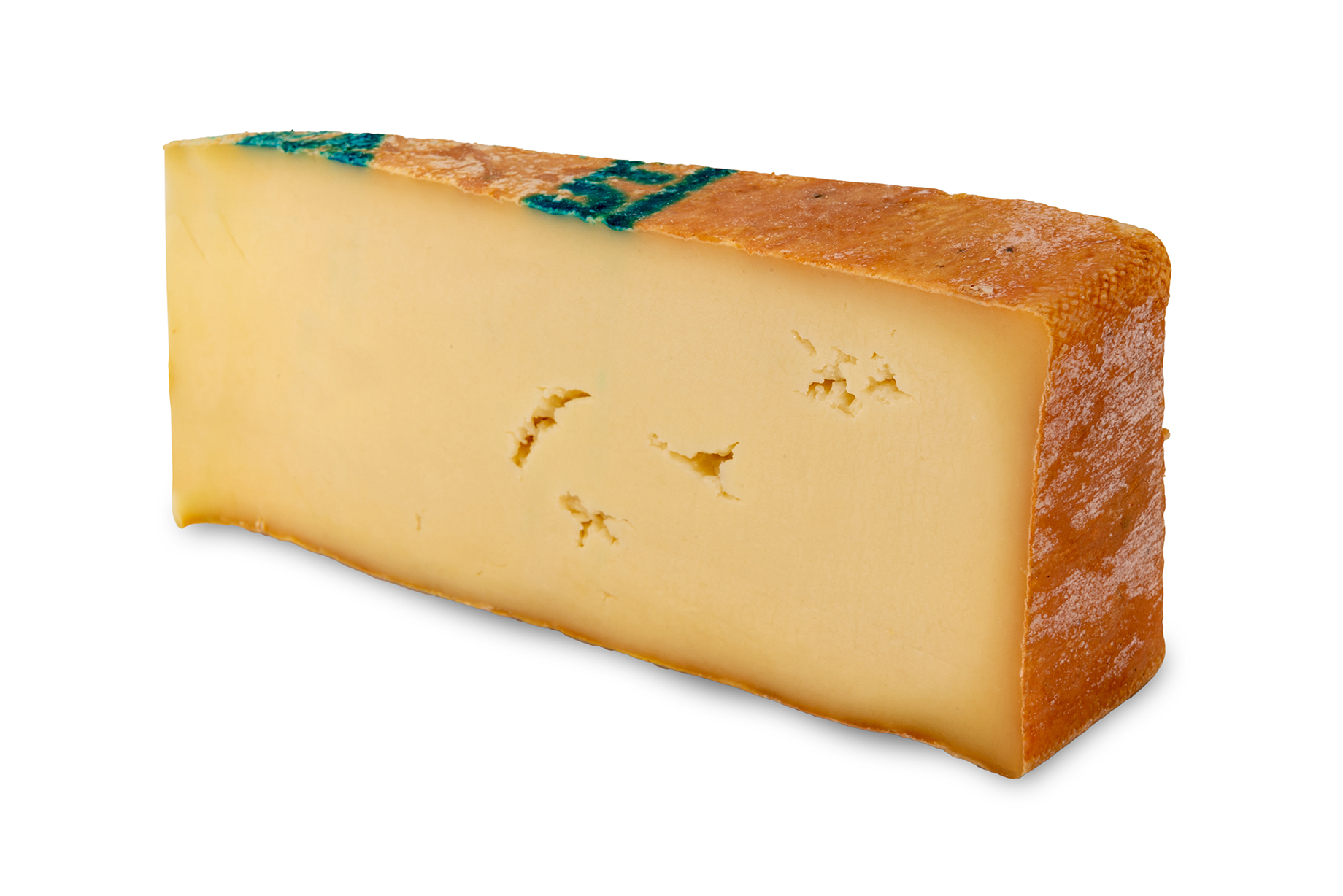
Aosta Valley’s Grilled Polenta Conchia with Cheese – A Comforting Alpine Delicacy
Grilled polenta conchia with cheese is a delectable dish from the Aosta Valley that highlights the region’s affinity for the hearty, comforting fare. This rustic recipe features polenta, a versatile staple made from coarsely ground cornmeal, which is cooked until it reaches a thick, creamy consistency. Once the polenta has been prepared, it is spread onto a wooden board or plate and allowed to set. The polenta is then cut into slices, or “conchia,” and grilled until they develop a crispy, golden exterior. The crowning touch of this dish is the generous layer of melted Fontina cheese, which is drizzled over the grilled polenta slices, infusing them with its rich, nutty flavour. Often enjoyed as a warm, satisfying meal on cold alpine nights, grilled polenta conchia with cheese is a delightful expression of Aosta Valley’s culinary traditions and love for simple, nourishing ingredients.
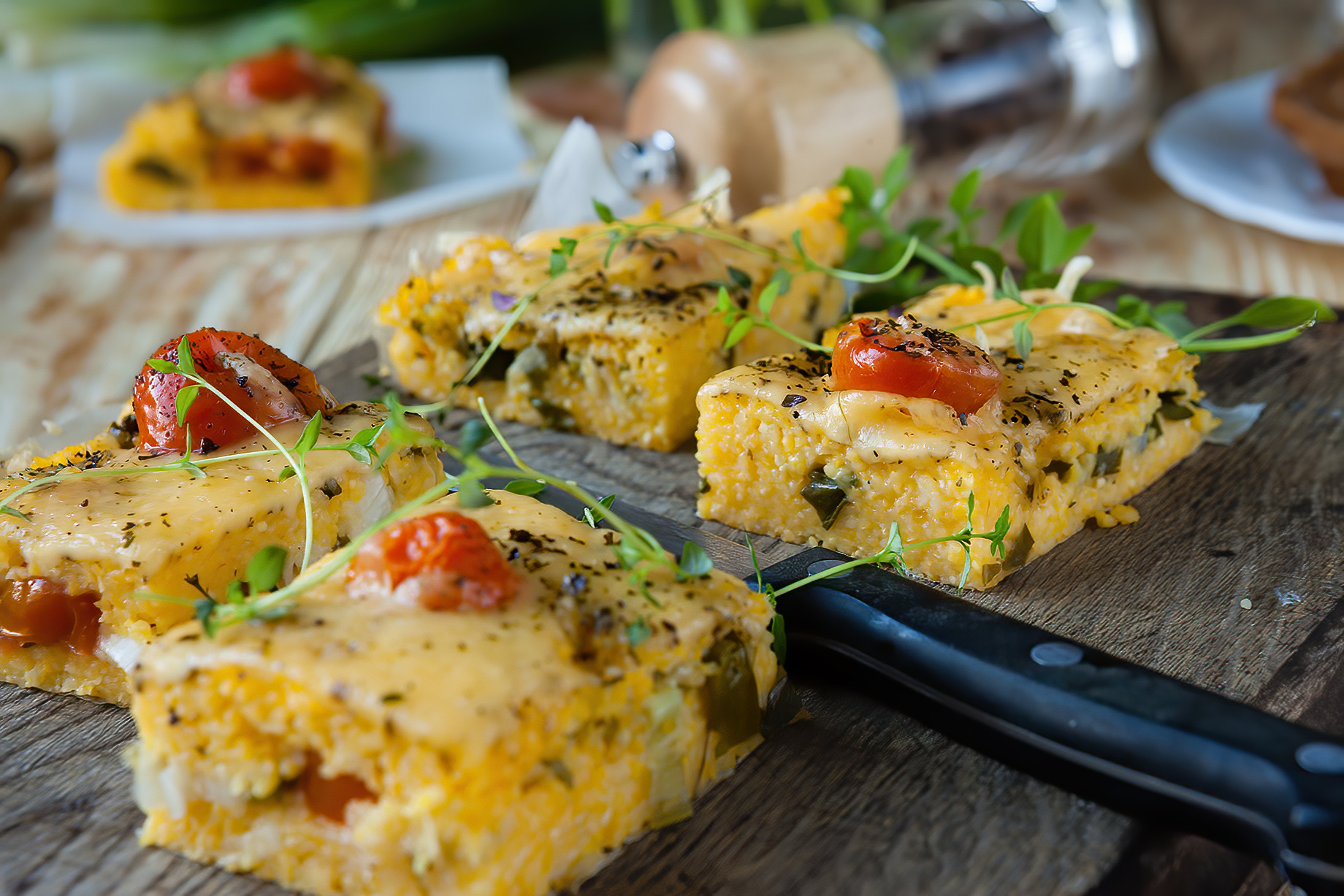
Valle d’Aosta is not only a paradise for nature lovers but also a haven for adventure enthusiasts. The region offers a wide range of outdoor activities, such as skiing and snowboarding in winter, and hiking, mountain biking, and rafting in the warmer months. Take the Skyway Monte Bianco cable car to admire the stunning views of Mont Blanc and the surrounding peaks, or trek the picturesque Gran Paradiso National Park, home to diverse flora and fauna, including the majestic ibex. After a day of adventure, unwind in one of the region’s many thermal spas, like the Pre-Saint-Didier Spa, which offers rejuvenating treatments and breathtaking alpine views.
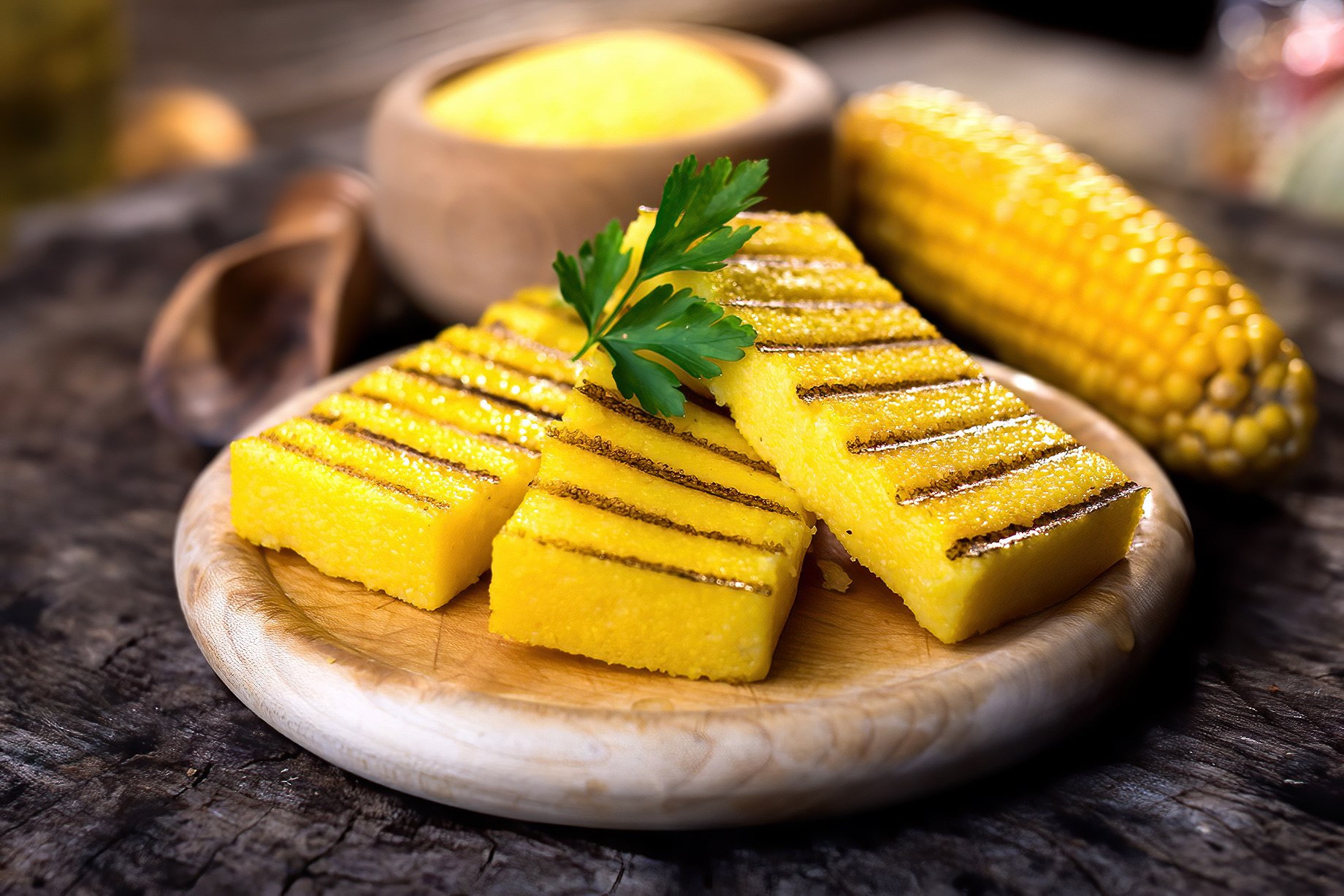
6. Calabria – Coastal Wonders and Spicy Flavors
Located at the southernmost tip of Italy’s mainland, Calabria offers a mix of pristine beaches, rugged mountains, and ancient history. Visit the picturesque coastal town of Tropea, perched atop dramatic cliffs, and explore the archaeological treasures of the ancient city of Locri. Calabrian cuisine is known for its bold and spicy flavours, with signature dishes like ‘nduja, a fiery spreadable salami.
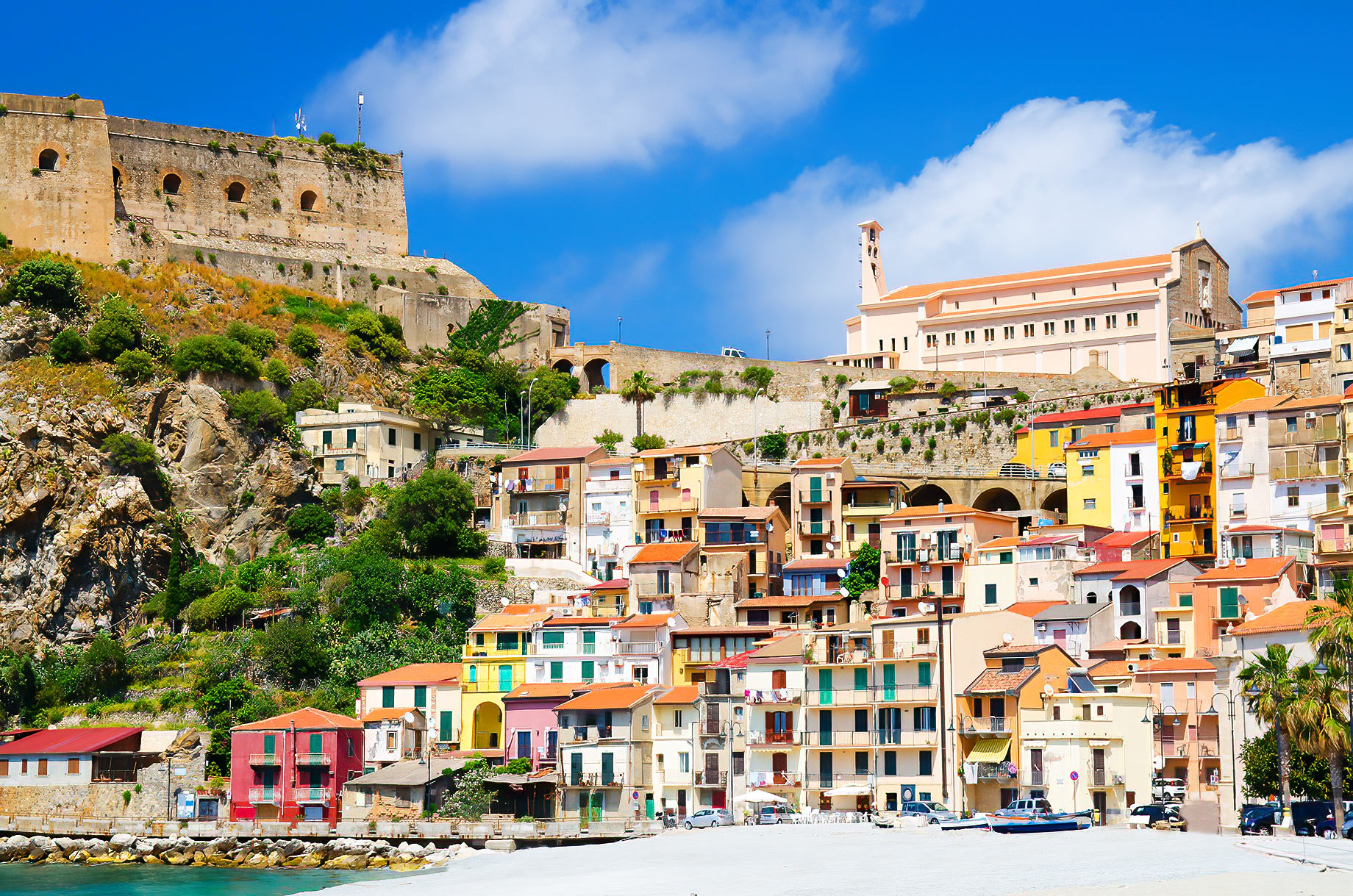
‘Nduja – Calabria’s Spicy and Spreadable Culinary Gem
‘Nduja, a distinctive and fiery sausage originating from the Calabria region of Italy, is a bold expression of the area’s passion for strong, spicy flavours. This unique delicacy is made from a mix of finely ground pork, fat, and a generous amount of fiery Calabrian chilli peppers, which give the sausage its characteristic red hue and intense heat. The ingredients are blended together, stuffed into casings, and left to age for several months, allowing the flavours to meld and intensify. The result is a soft, spreadable sausage with a rich, smoky taste and a lingering spiciness.
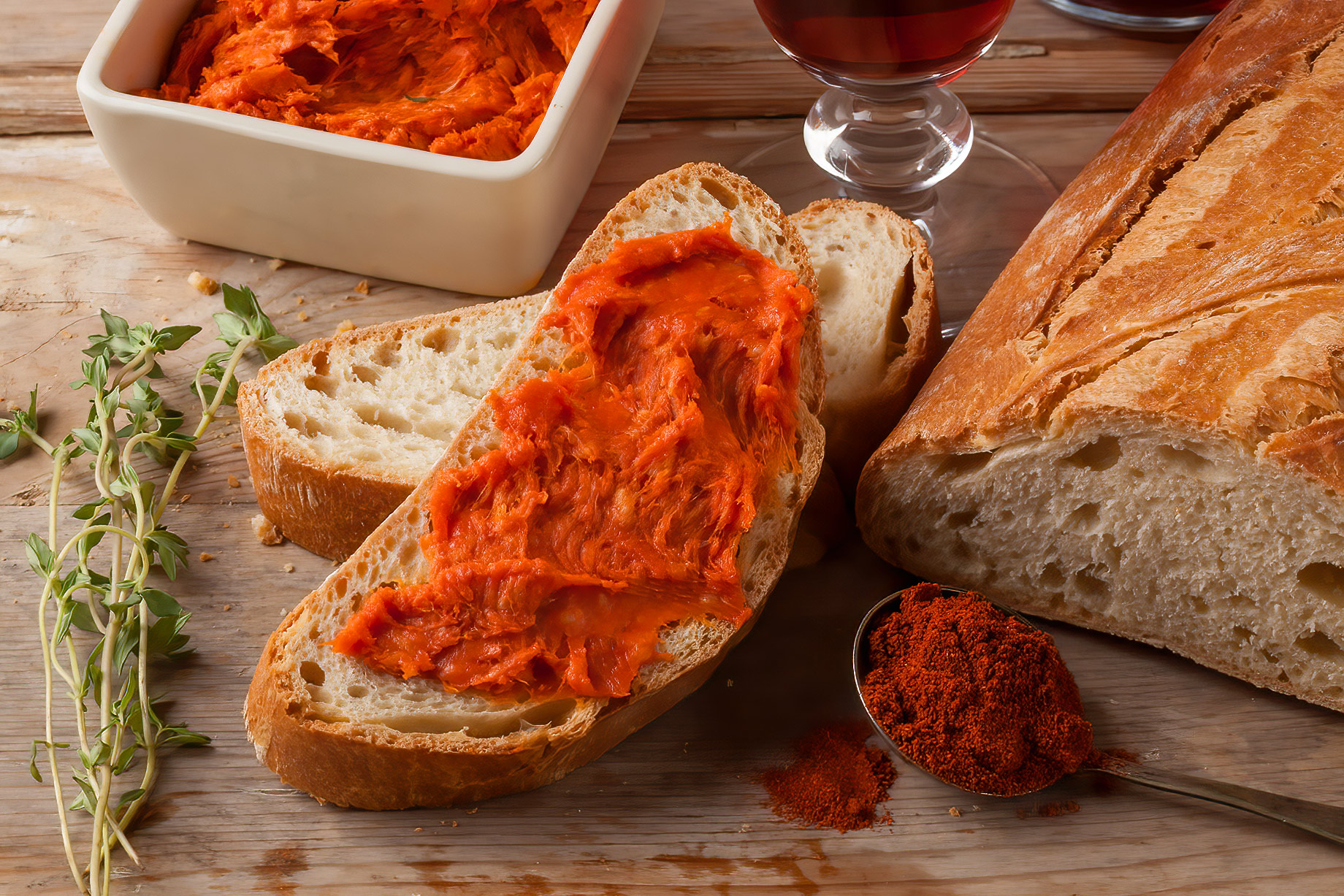
‘Nduja is a versatile ingredient that can be enjoyed in various ways. It can be spread onto crusty bread, stirred into pasta sauces, or used as a topping for pizza, adding a burst of heat and depth of flavour to any dish. It is also often served alongside cheese and other cured meats as part of a traditional Italian antipasto platter. A taste of Calabria’s ‘nduja offers a tantalizing journey into the region’s vibrant and spicy culinary traditions that are sure to ignite the senses.
7. Umbria – The Green Heart of Italy
Umbria, situated in the central part of Italy, is a region of lush green landscapes, rolling hills, and historic cities like Perugia and Assisi.
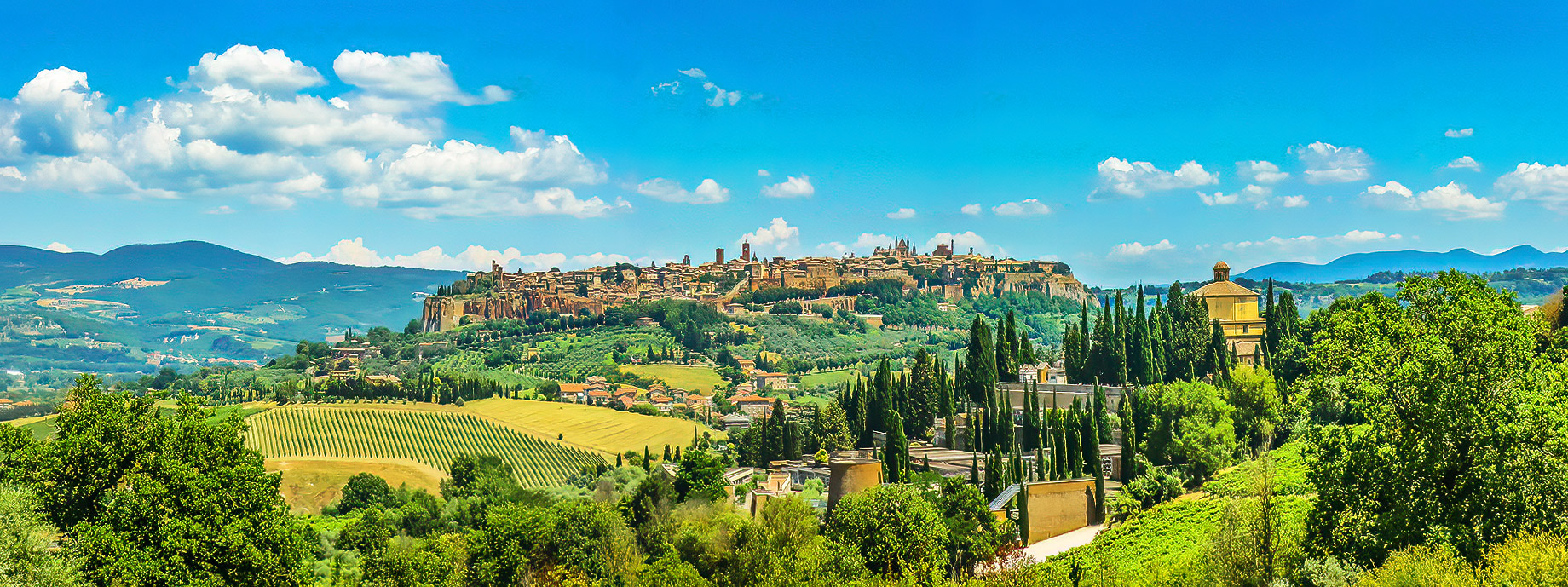
Discover the region’s rich artistic heritage, exemplified by the Basilica of San Francesco, adorned with frescoes by Giotto. Umbrian cuisine is known for its earthy flavours and locally sourced ingredients. Be sure to try strangozzi, a traditional pasta often served with black truffles, and porchetta, a succulent roast pork dish flavoured with herbs and garlic. For a sweet treat, savour the region’s famous panpepato, a spiced chocolate and nut cake that perfectly embodies the soul of Umbria.
Panpepato – Italy’s Spiced and Delectable Holiday Cake
Panpepato is a traditional Italian dessert that hails from several regions, including Tuscany, Umbria, and Emilia-Romagna, and is often enjoyed during the holiday season. This dense, dark, and richly spiced cake is made from a delightful blend of ingredients, such as honey, cocoa, nuts (typically almonds, hazelnuts, or walnuts), candied citrus peel, and an array of warm spices like cinnamon, cloves, and nutmeg.
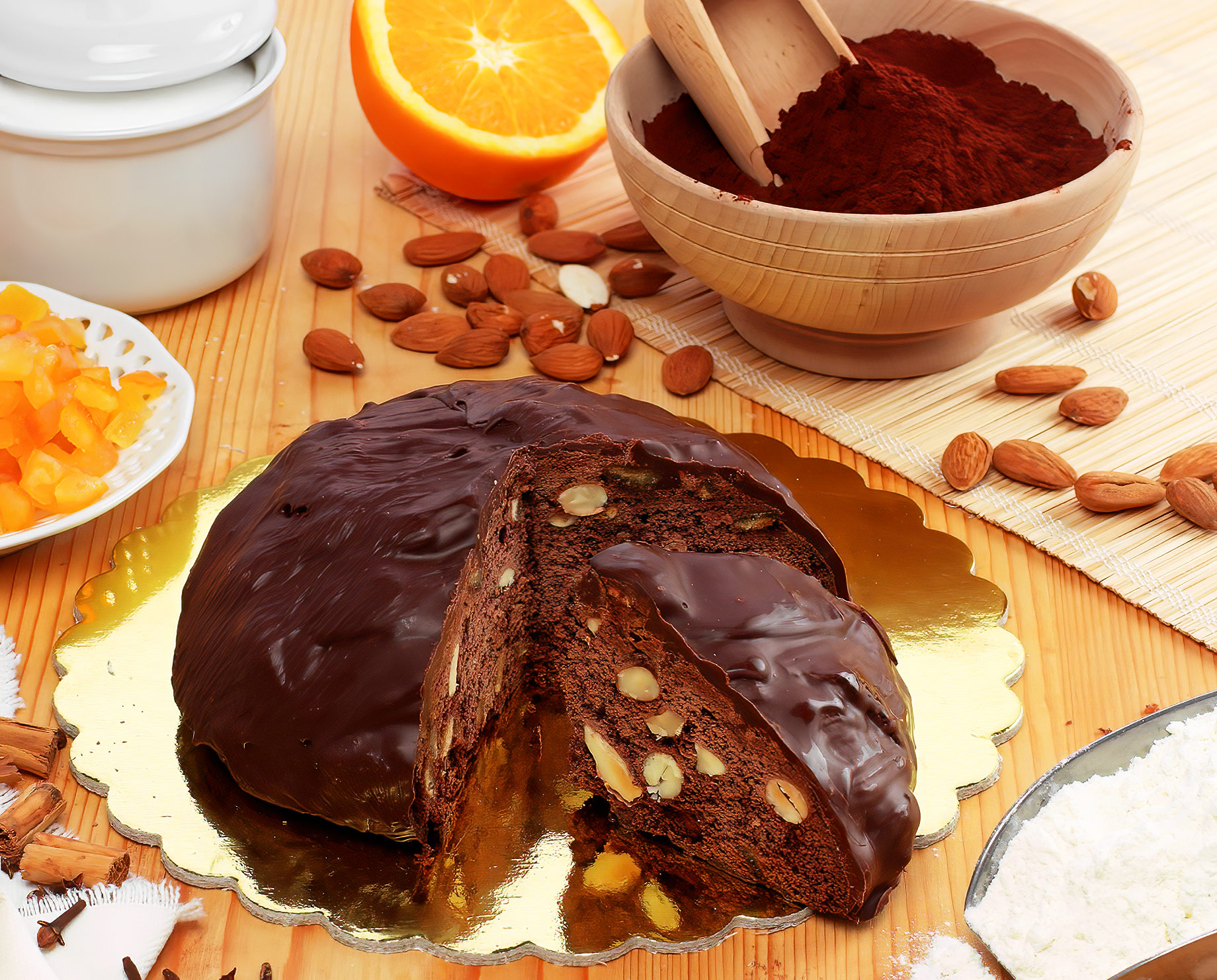
Some variations even include a dash of black pepper, which gives the cake its name, as “panpepato” translates to “peppered bread” in Italian. Once baked, the cake is typically covered with a thin layer of dark chocolate, adding a touch of decadence and balancing the complex flavours within. Panpepato is best enjoyed in small slices, often accompanied by a glass of Vin Santo or another dessert wine, making it a perfect treat to share with friends and family during festive gatherings. This timeless cake is a true celebration of Italy’s rich culinary heritage and a testament to the country’s love for bold and harmonious flavours.
Umbria’s Strangozzi – A Rustic and Flavorful Pasta Tradition
Strangozzi, a traditional pasta from the Umbrian region of Italy, is a beloved culinary staple that showcases the simplicity and earthiness of the area’s cuisine. This hand-rolled, ribbon-like pasta is made from a basic dough of flour and water, resulting in a slightly chewy and dense texture that pairs well with a variety of sauces. Strangozzi is often referred to as “priest stranglers” due to the pasta’s resemblance to a knotted cord, and according to local legend, it was named after the shoelaces of greedy priests who would visit households for free meals. One of the most popular preparations of strangozzi in Umbria is “strangozzi al tartufo,” which features the pasta tossed in a delicate sauce made from black truffles, butter, garlic, and a touch of grated pecorino cheese. Another classic dish is “strangozzi alla spoletina,” where the pasta is served with a rich tomato sauce, enhanced by the flavours of pancetta, onion, and pecorino cheese. A taste of Umbria’s strangozzi provides an authentic glimpse into the region’s rustic and delicious culinary traditions.
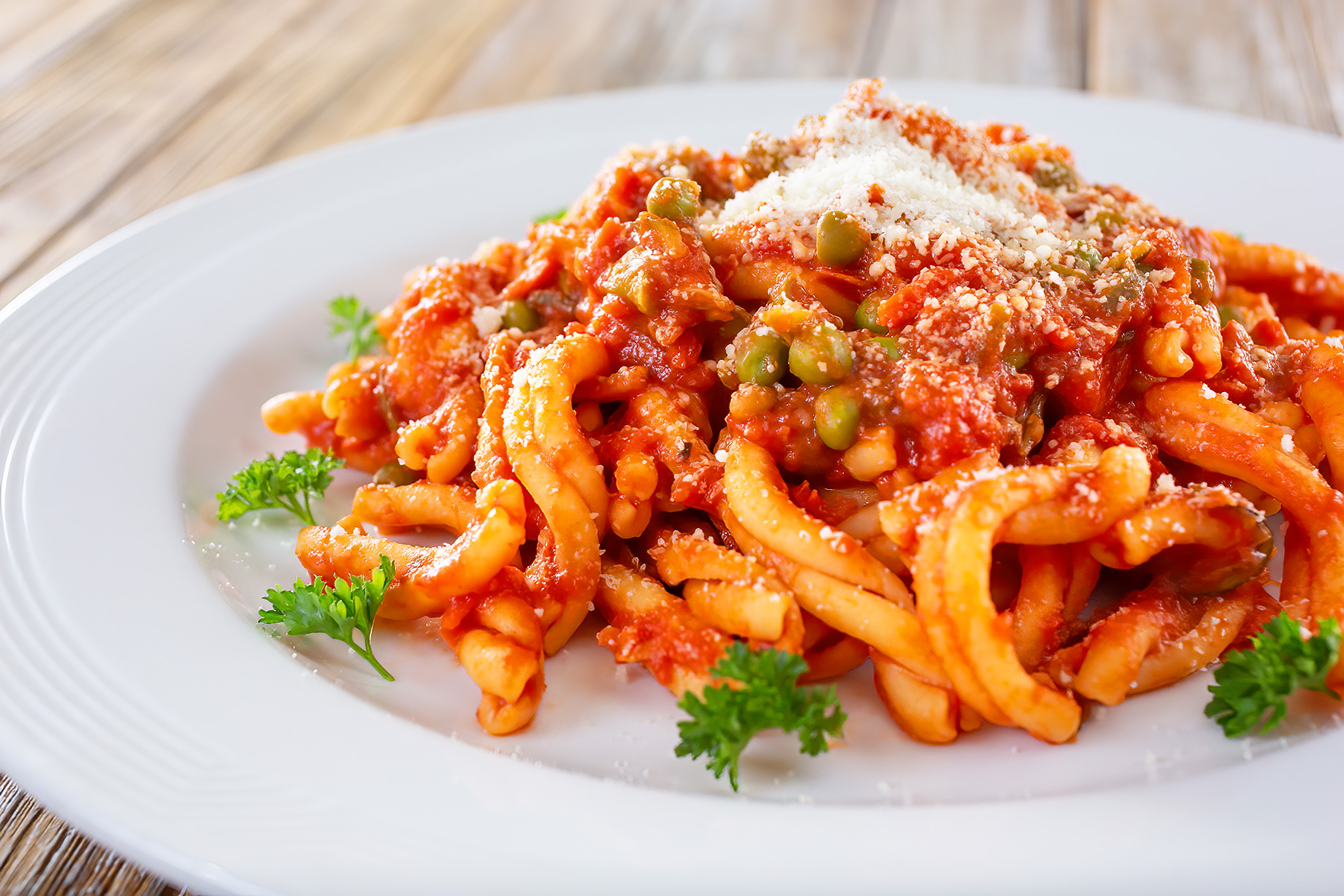
The medieval towns and villages that dot the Umbrian landscape are a testament to the region’s rich history and architectural splendour. In Orvieto, perched atop a volcanic tufa cliff, marvel at the stunning façade of the Orvieto Cathedral, a masterpiece of Italian Gothic architecture. Visit the charming hilltop town of Todi, with its enchanting Piazza del Popolo, which is surrounded by impressive medieval buildings, including the Palazzo del Popolo and the Palazzo del Capitano. For a truly unique experience, explore the ancient underground city of Narni, which boasts an intricate network of tunnels and chambers dating back to the Etruscan era. Umbria’s diverse attractions, from its art and architecture to its culinary delights, make it an irresistible destination for travellers seeking an authentic Italian experience.
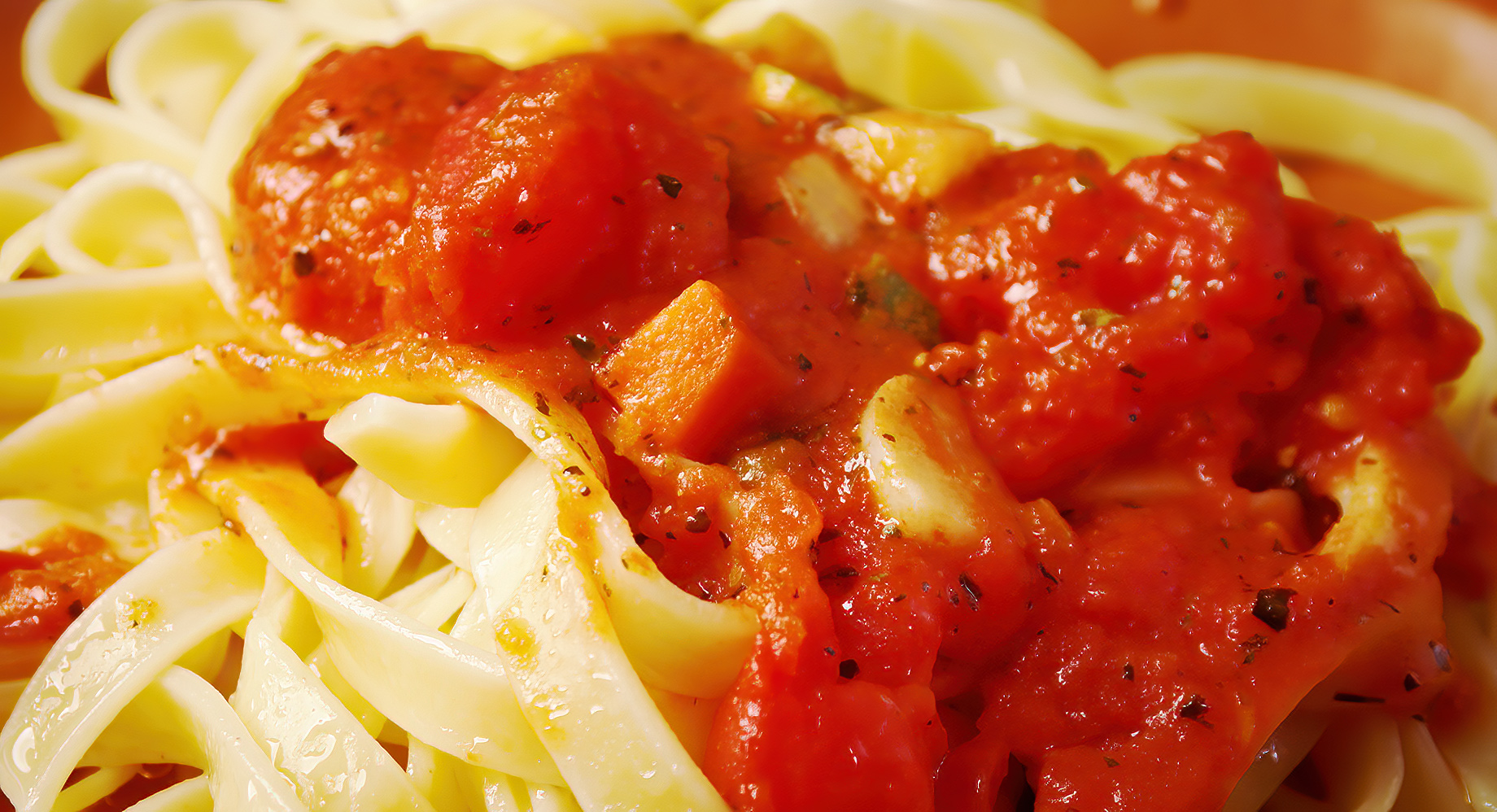
8. Friuli-Venezia Giulia – A Fusion of Cultures and Flavors
Friuli-Venezia Giulia, located in the northeastern corner of Italy, is a captivating region where Italian, Austrian, and Slavic cultures merge. Stroll through the historic streets of Trieste, a city with a rich literary heritage and a vibrant coffee culture. Visit the medieval town of Cividale del Friuli, founded by Julius Caesar, and sample the region’s diverse cuisine, characterized by dishes like frico, a crispy cheese and potato pancake, and gubana, a sweet pastry filled with nuts and dried fruits.
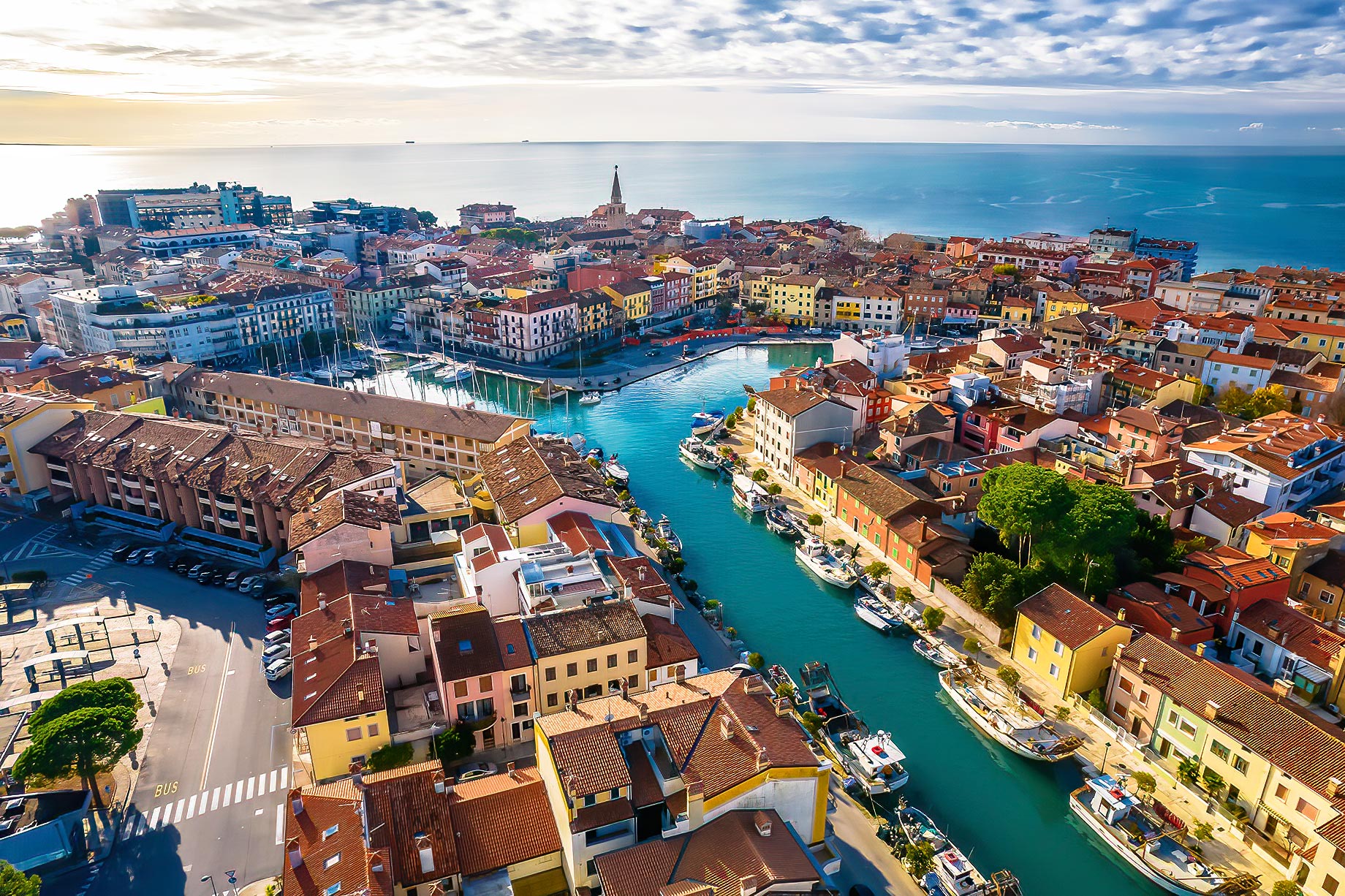
Gubana – Friuli-Venezia Giulia’s Sweet and Scrumptious Delight
Gubana, a traditional dessert from the Friuli-Venezia Giulia region, is a testament to the area’s rich culinary heritage and the influence of its diverse cultures. This sumptuous pastry features a tender, yeast-based dough filled with a delectable mixture of ground nuts, raisins, candied fruit, and a hint of grappa or rum, which adds a subtle, warming kick. Rolled into a spiral shape resembling a snail shell, Gubana is baked until golden brown and is often dusted with powdered sugar before serving. With roots dating back to the Middle Ages, this festive treat is typically prepared during holidays and special occasions, such as Easter and Christmas, when it is shared among family and friends as a symbol of togetherness and celebration. A slice of Gubana, accompanied by a glass of sweet dessert wine or a steaming cup of coffee, offers a taste of Friuli-Venezia Giulia’s unique blend of flavours and traditions.
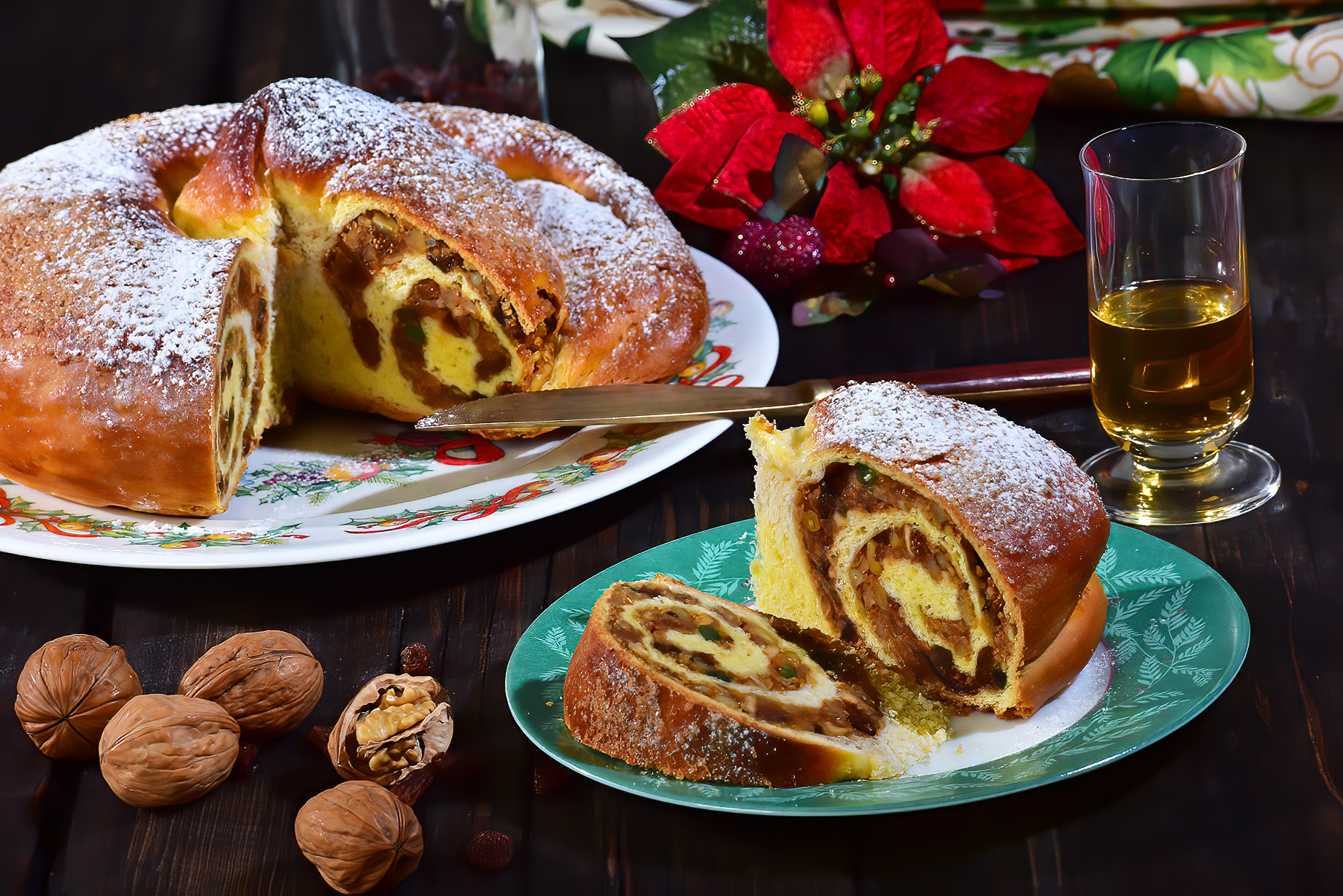
Frico – A Satisfying and Savory Staple from Friuli-Venezia Giulia
Frico, a rustic and hearty dish hailing from the Friuli-Venezia Giulia region, showcases the area’s passion for simple, flavorful ingredients and satisfying fare. This versatile dish is primarily made from Montasio cheese, a semi-hard cow’s milk cheese produced in the region, which is grated and then cooked in a hot pan until it melts and forms a crispy, golden crust. There are two main variations of Frico: a thin, crunchy version that is akin to a cheese crisp, and a thicker, more substantial version that incorporates additional ingredients, such as thinly sliced potatoes, onions, or other seasonal vegetables. The latter is typically served as a main course or a satisfying side dish. Frico is best enjoyed while it is warm, often accompanied by a slice of polenta or a crusty piece of bread. A true embodiment of Friuli-Venezia Giulia’s culinary traditions, Frico is a delightful, savoury treat that is sure to please any cheese lover.
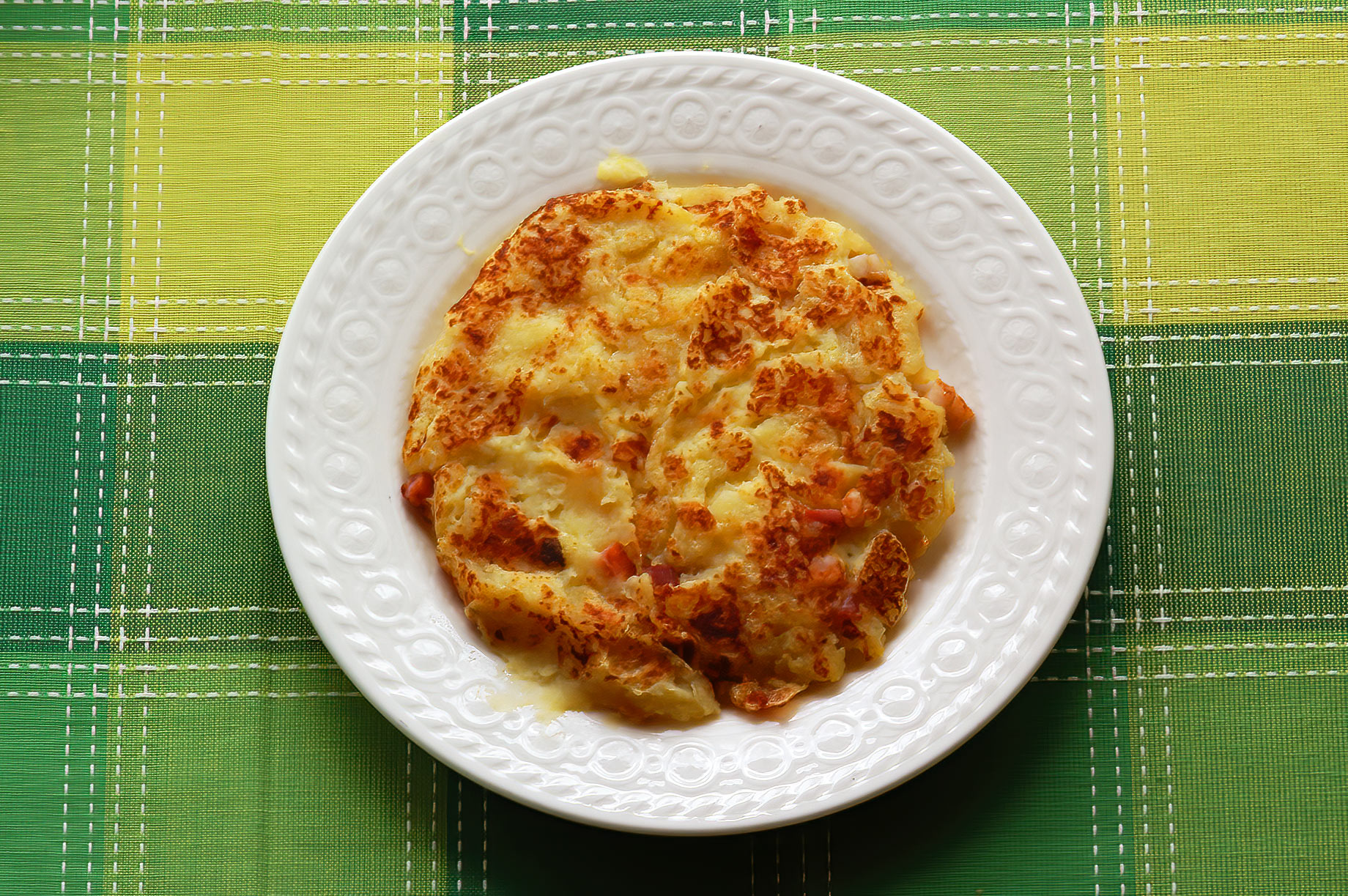
The diverse landscape of Friuli-Venezia Giulia adds to its allure, encompassing the majestic peaks of the Carnic and Julian Alps, the lush vineyards of the Collio wine region, and the pristine shores of the Adriatic Sea. Nature lovers can explore the region’s numerous hiking trails, such as those found in the Parco Naturale delle Prealpi Giulie, or venture to the UNESCO-listed Dolomites for a truly breathtaking experience. Wine aficionados will be delighted by a visit to the Collio area, renowned for its exceptional white wines and picturesque vineyards. For a seaside escape, head to the resort town of Grado, offering beautiful beaches, historic sites, and a serene atmosphere. Friuli-Venezia Giulia’s fusion of natural beauty, diverse cultures, and tantalizing flavours ensures a memorable and enriching travel experience.
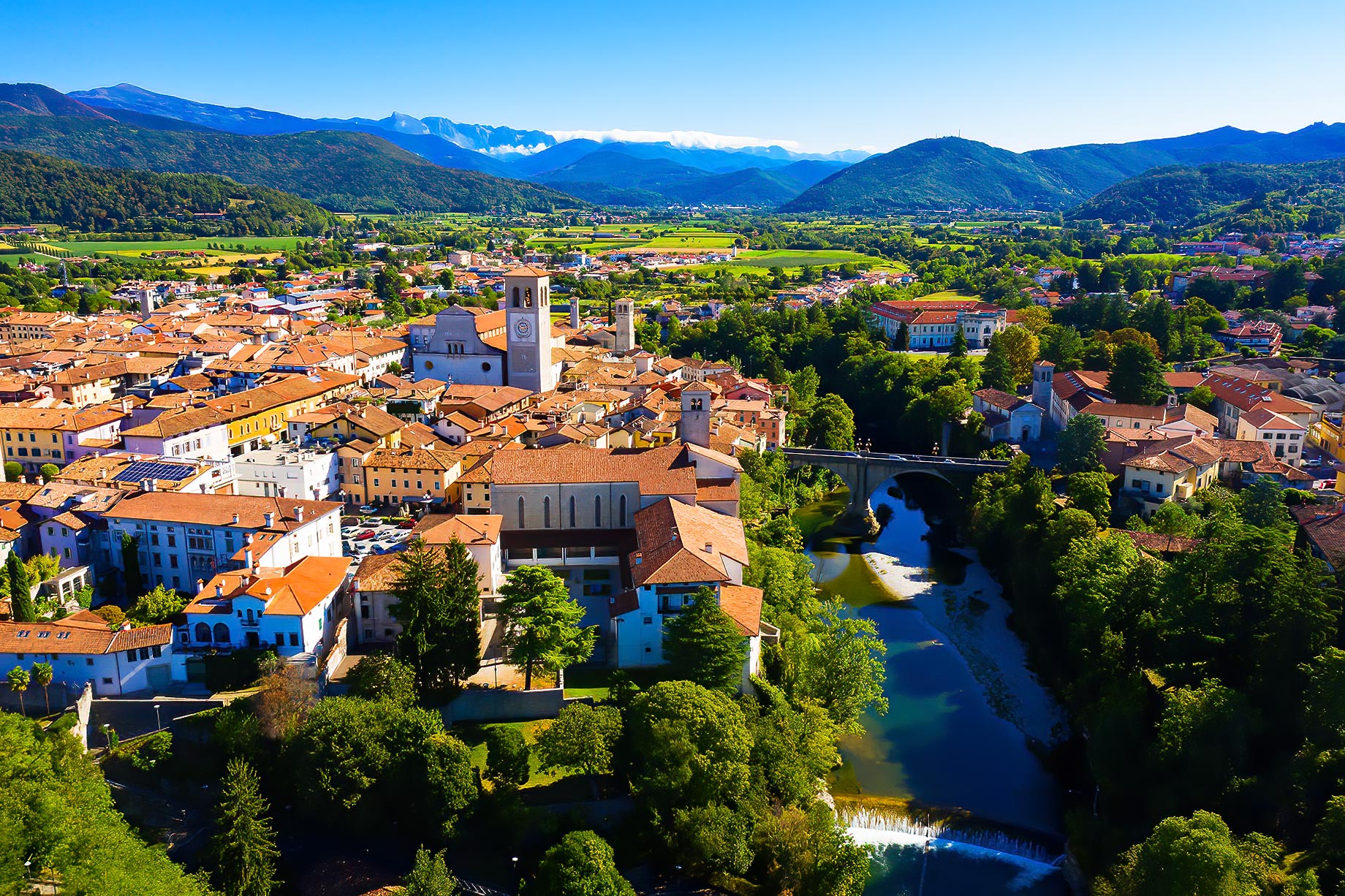
9. Campania – Sun-Kissed Landscapes and Culinary Delights
Last but not least, we venture to the region of Campania, famous for its stunning Amalfi Coast, the ancient ruins of Pompeii and Herculaneum, and the bustling city of Naples. While these attractions are well-known, Campania also offers many hidden gems, such as the town of Paestum, with its well-preserved Greek temples, and the island of Procida, a colourful fishing village. Campania’s cuisine is among Italy’s most celebrated, featuring dishes like pizza, mozzarella di bufala, and sfogliatelle pastries. Be sure to indulge in these culinary delights as you explore the region’s sun-kissed landscapes.
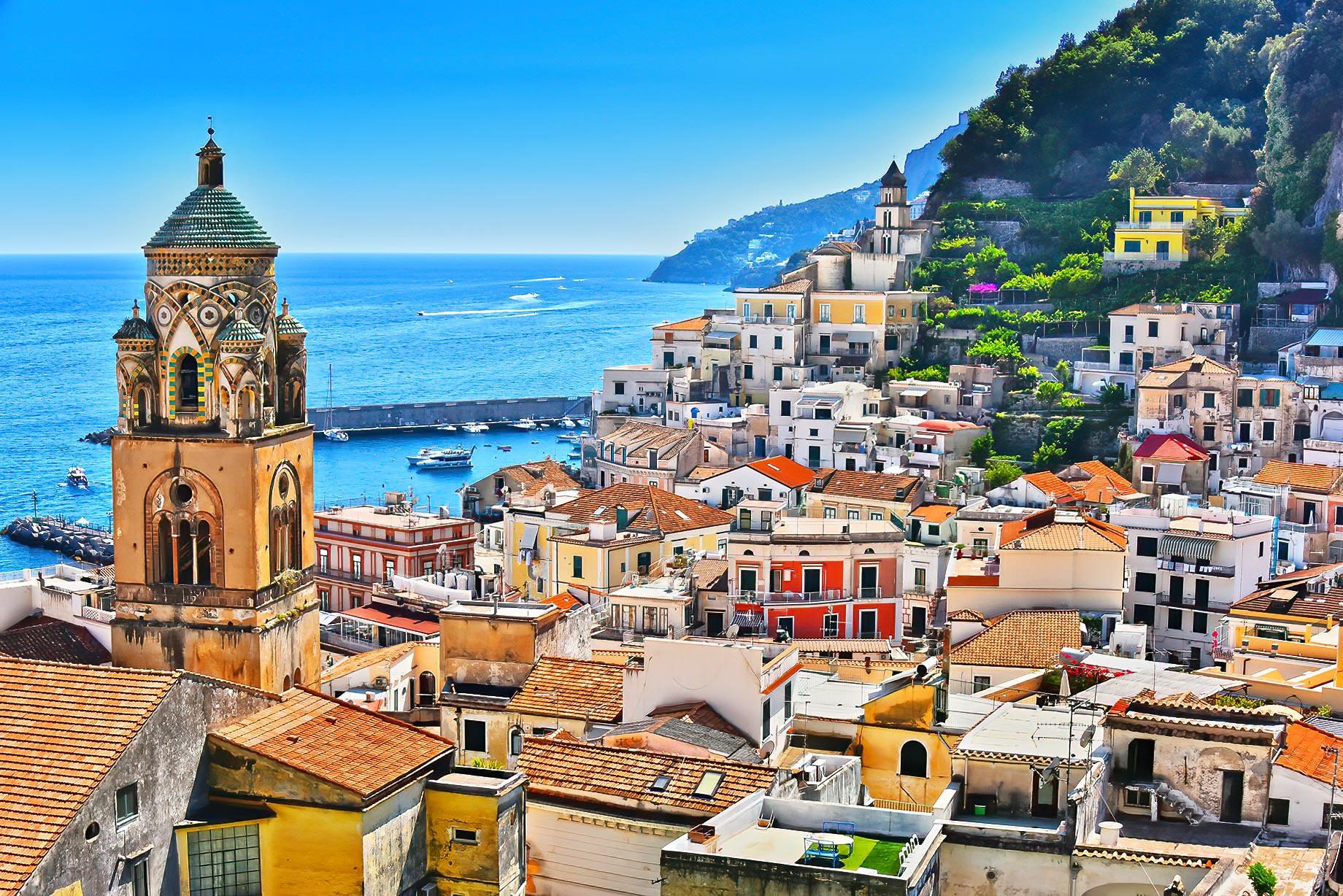
Sfogliatelle – Campania’s Delectable and Flaky Pastries
Sfogliatelle, a scrumptious pastry hailing from the Campania region of Italy, is a true testament to the area’s expertise in crafting mouthwatering desserts. This iconic Neapolitan treat features a delicate, multi-layered dough that is meticulously folded and rolled to create its signature flaky, shell-like exterior. The interior of the pastry is filled with a luscious mixture of sweetened ricotta cheese, often combined with semolina, sugar, egg yolks, and a touch of citrus, resulting in a creamy and aromatic filling. Sfogliatelle comes in two main variations: sfogliatelle ricce, which has a crisp and ridged exterior, and sfogliatelle frolle, which features a softer, shortcrust pastry shell.

Once baked to golden perfection, the pastries are dusted with a light sprinkling of powdered sugar, adding a touch of sweetness that perfectly complements the rich, velvety filling. Sfogliatelle is best enjoyed fresh and warm, often accompanied by a steaming cup of espresso or cappuccino. A bite of this heavenly Campanian pastry provides a delightful sensory experience that is sure to leave a lasting impression on anyone who tastes it.
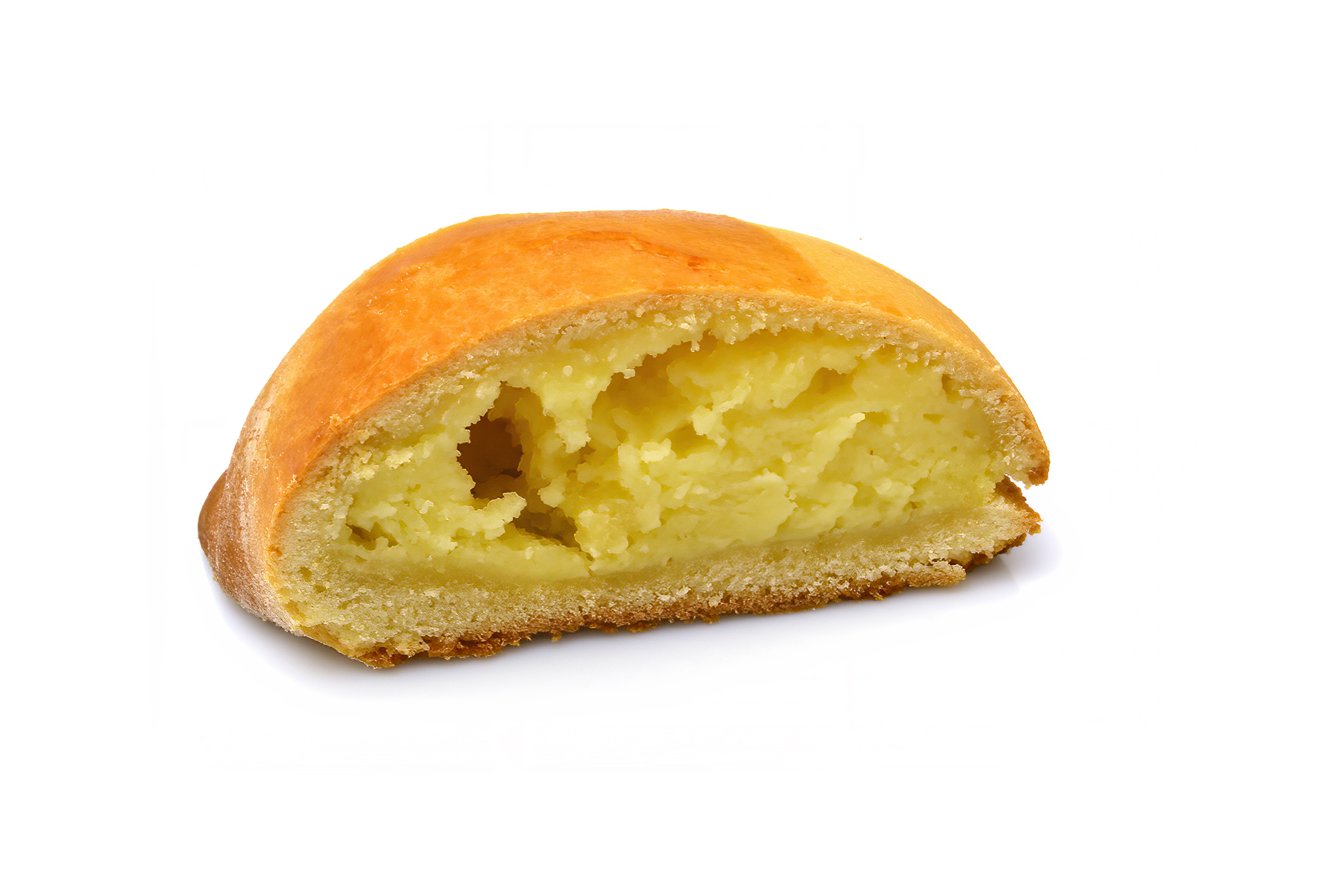
Campania’s fertile lands and coastal location have contributed to its rich agricultural heritage, with vineyards and orchards dotting the landscape. The region is particularly famous for its wine production, especially in the area surrounding Mount Vesuvius, where the volcanic soil lends a unique character to the wines. Be sure to visit a local vineyard for a wine-tasting experience and to sample the renowned Lacryma Christi, a wine with ancient origins that comes in both red and white varieties. Campania is also home to an array of artisanal food products, such as the famous San Marzano tomatoes, used in traditional Neapolitan pizza, and the exquisite Amalfi Coast lemons, which are the key ingredient in the region’s beloved limoncello liqueur. Exploring Campania’s culinary landscape will provide a sensory adventure that complements the region’s stunning natural beauty and historic wonders.
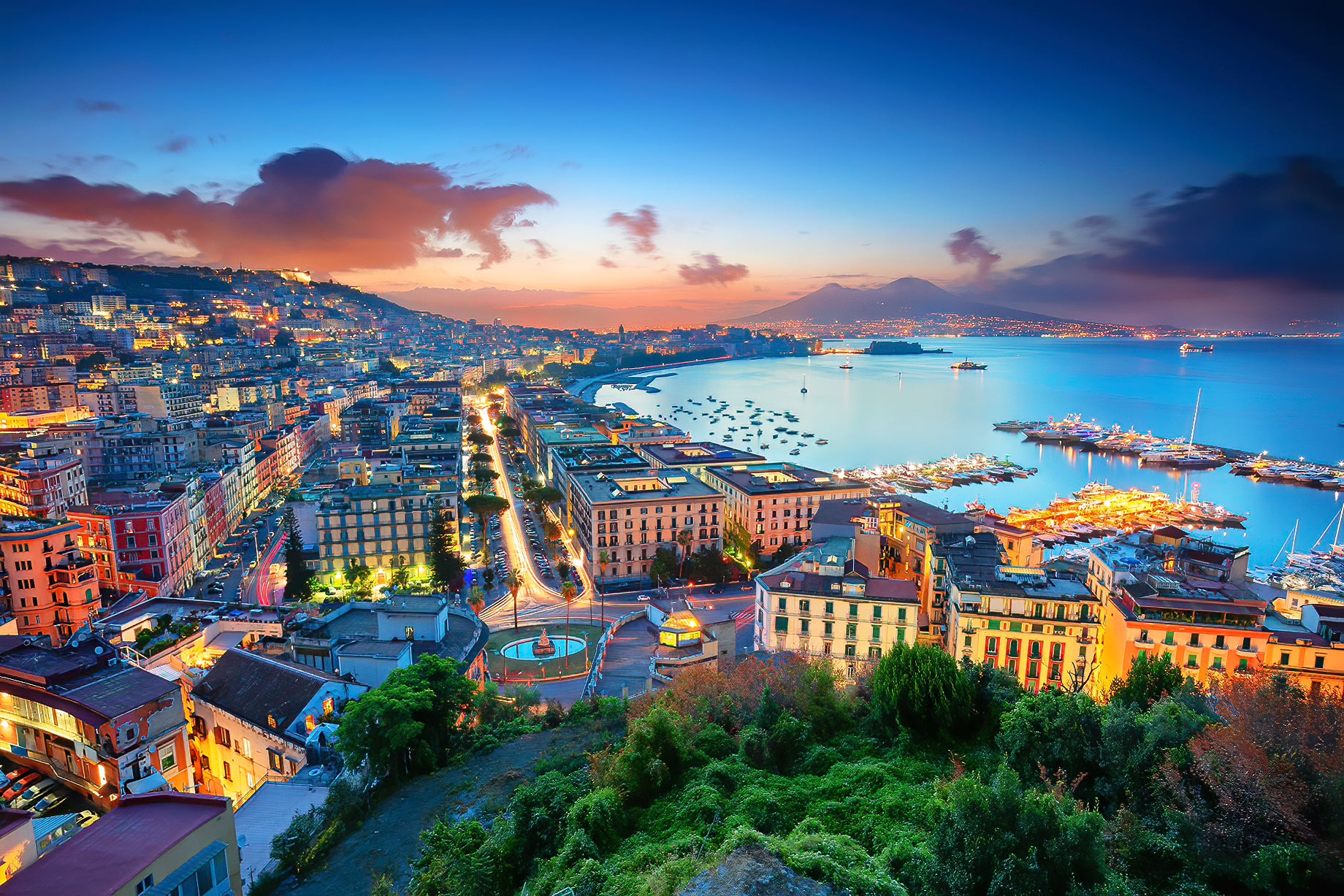
10. Apuglia, Puglia – The Heel of Italy’s Boot and a Culinary Paradise
Uncover the sun-drenched beauty and rich culinary heritage of Apulia, a region known for its olive groves, whitewashed hilltop towns, and crystal-clear waters. Indulge in the region’s famous orecchiette pasta, often served with broccoli rabe or a hearty meat sauce, and the delicious and unique burrata cheese. Visit the iconic trulli houses of Alberobello, the Baroque splendour of Lecce, and the enchanting coastal towns of Polignano a Mare and Otranto.
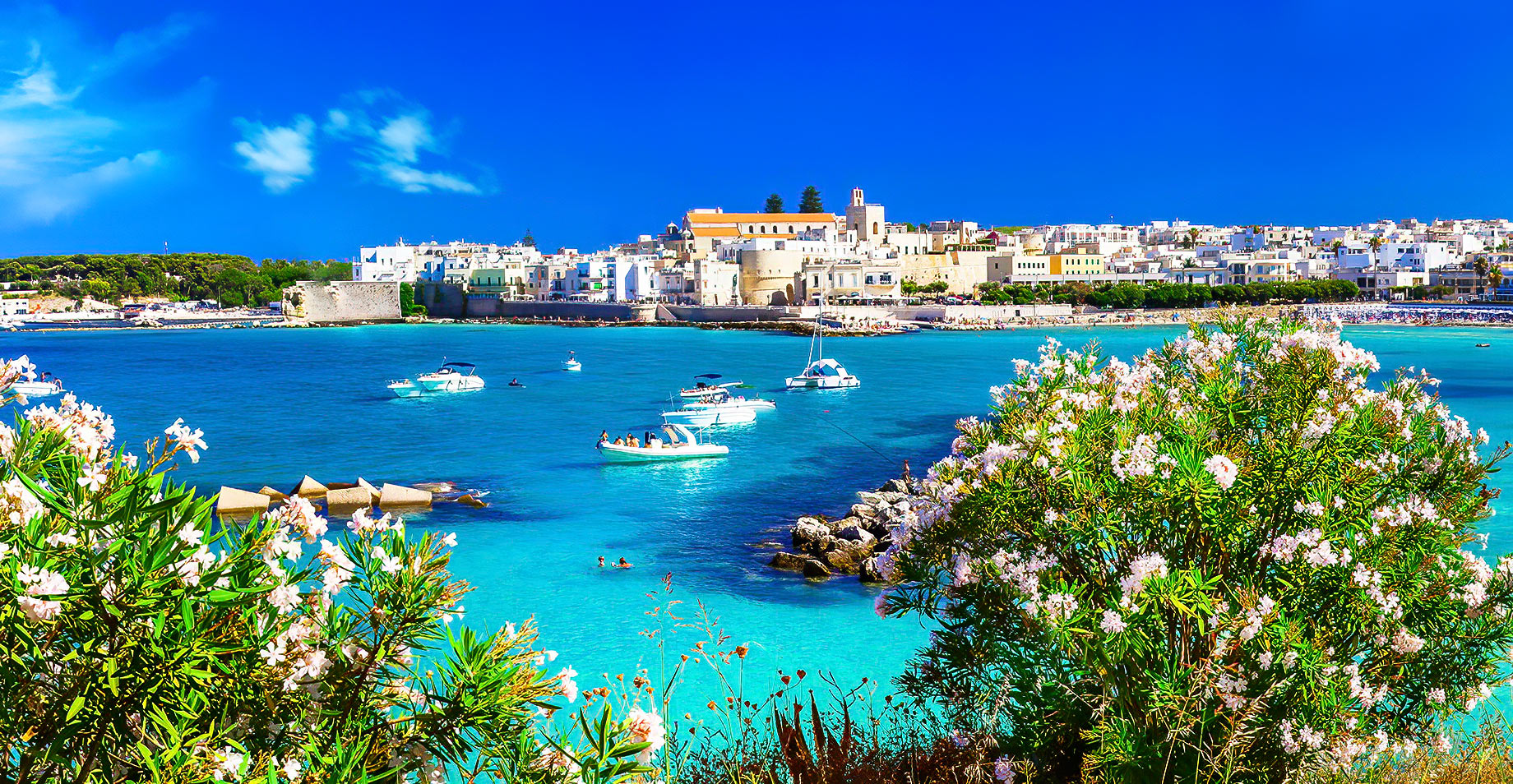
Orecchiette pasta with vegetables is a delicious and healthy dish that showcases the flavours of Puglia. The region’s abundant produce and Mediterranean influences are highlighted in this simple yet satisfying meal.
The name “orecchiette” means “little ears” in Italian, which is an apt description of the pasta’s unique ear-like shape.
Orecchiette pasta is traditionally made with durum wheat semolina flour and water, without the use of eggs. The dough is rolled into a thin rope and cut into small pieces. Each piece is then pressed with the tip of a knife or a thumb to create the characteristic ear shape, with a slightly thicker center and thinner edges. The resulting pasta has a concave structure that helps to hold the sauce, while the rough exterior texture allows the sauce to cling to the pasta, enhancing the overall flavour.
One of the most popular and traditional dishes featuring orecchiette pasta is “Orecchiette con le Cime di Rapa” (Orecchiette with Broccoli Rabe). In this dish, the pasta is cooked and then tossed with sautéed broccoli rabe, garlic, and red pepper flakes, creating a simple yet flavorful meal that showcases Puglia’s love for fresh, local ingredients. The slightly bitter taste of the broccoli rabe beautifully complements the chewy texture of the orecchiette, making this dish a true Pugliese classic.
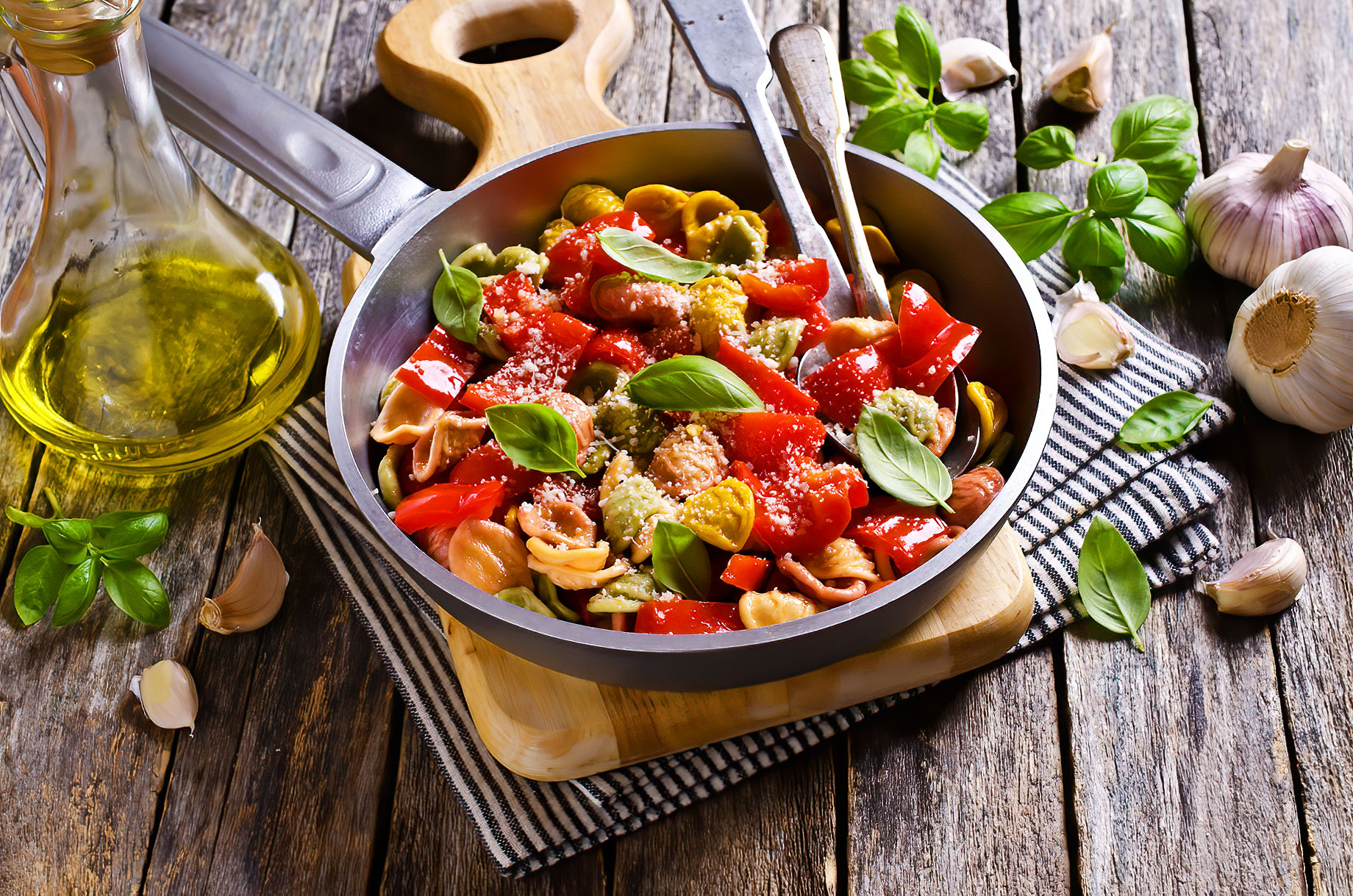
Another popular orecchiette dish is “Orecchiette alla Crudaiola,” which features pasta mixed with raw cherry tomatoes, fresh basil, mozzarella or burrata cheese, and a drizzle of extra virgin olive oil. This refreshing and light dish celebrates the region’s abundant produce and is perfect for warm summer days. Orecchiette pasta is a symbol of Puglia’s culinary tradition and offers a delightful taste of the region’s rich flavours and history.
Conclusion
As you traverse these lesser-known regions of Italy, you’ll discover a treasure trove of cultural and culinary delights. From the rolling hills of Le Marche to the alpine beauty of Valle d’Aosta, these hidden gems will leave you with unforgettable memories and a deeper appreciation for Italy’s rich and diverse heritage. So pack your bags, grab a fork, and get ready to embark on the ultimate Italian adventure.

